May 5 - 11, 2019: Issue 403
John Vaughan
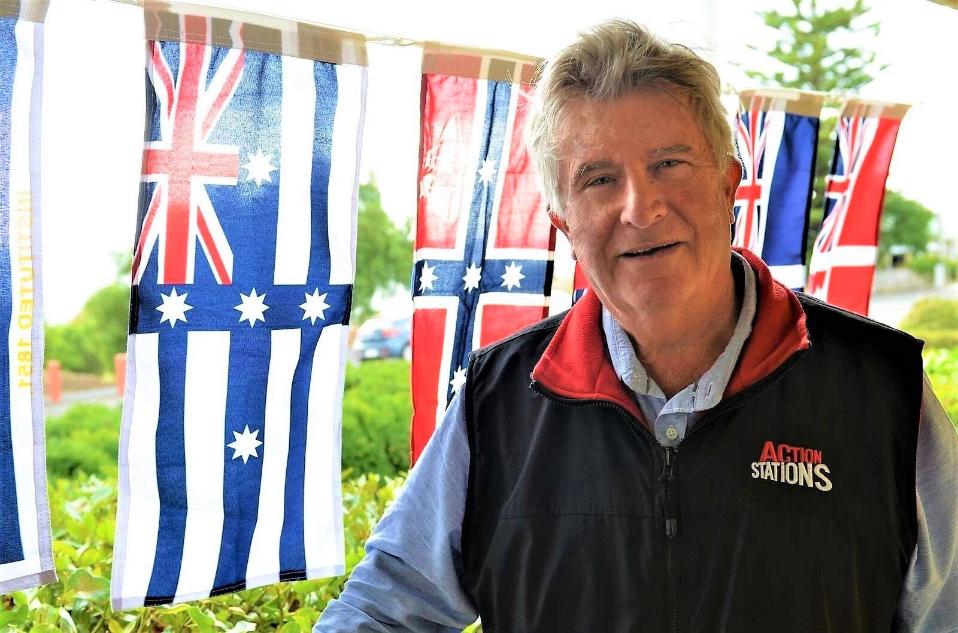
John Vaughan is a vexillographer and is considered to be Australia’s leading authority on the design, etiquette, protocol and history of flags. He has been chief executive of the Royal Australian Historical Society and was appointed by Sir Colin Hines OBE to help launch the Australian National Flag Association (ANFA) in 1983. He was founder and managing director of AUSTRALIANA FLAGS, 1973 – 2017.
John served as President of ANFA (NSW) for many years and proposed the concept of Australian National Flag Day at the inaugural public meeting in 1983. After thirteen years of active lobbying, Governor-General, Sir William Deane proclaimed Flag Day, 3 September as an annual national day of commemoration. Since 2008, 3 September, Flag Day has also been proclaimed as Australian Merchant Navy Day when the Australian Red Ensign, the National Colours afloat, maybe flown on land in commemoration of service and sacrifice of Australia’s Merchant Navy service.
John spends much of his time speaking on the history and meaning of flags having given more than 5,000 talks, many radio/television interviews and participated in a number of flag debates. Since 1973 he has been making flags specialising in replica historical flags of Australasia. John was the driving force for the new replica signal mast at Sydney Observatory, Fort Phillip Signal Station.
His talk is usually entitled “Australian Maritime and Heritage Flags” and covers the evolution of the designs of other flags which lead to the unique public competition in 1900 to create our national flag of ‘Stars and Crosses’. John describes the design of flags past and present with the rationale behind them. He will also talk on the significance and purpose of Australian National Flag. John shows a variety of some twenty historically important flags during his address. His own designs include; the First Fleet Re-Enactment Suit of Colours, Lord Howe Island, Dangar Island, Scotland Island, Willoughby City, Sydney Ferries, Anglican Flag of Australia, Greater Sydney, Australian Christmas and the Red Wine Pennant. Australia’s first Southern Cross flag designs of 1823/24, 1831, 1851 and 1853 are displayed. His flag collection has featured on the ABC TV series, “Collectors”.
Regular readers would be aware of his wonderful photographs of our area as well as sharing family images of this place from the years of when his grandfather and father and mother used to frequent Clareville, were founding members of the Avalon Sailing Club, and those he continues to delight us with of the Pittwater estuary and the pristine waters that run alongside Pittwater.
When and where were you born?
I was born at the Mater Hospital in Sydney in the late 1940s.
Your father is Les Vaughan?
That’s right, Alfred Leslie Innis Vaughan, known as ‘Les’ and brother of Harold Bernard Vaughan and Kenneth Joseph Vaughan.
Dad was one of the founders of Avalon Sailing Club, along with my grandfather who was Innis James George Vaughan, known as ‘Jim’. Harold was the middle son, my father was the eldest, and the youngest son who is still going strong, Kenneth Joseph (Ken) Vaughan.
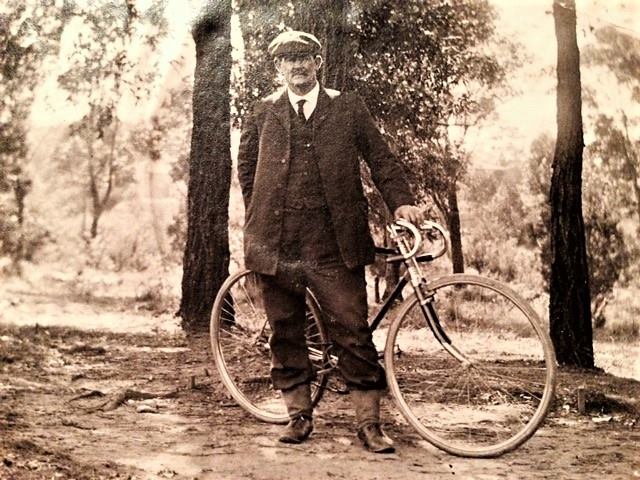
Innis James George Vaughan
Les Vaughan with his baby Son, John possibly at Hallets Beach photo most likely by Eileen, Mum Circa 1947
John Vaughan as a small boy in Broken Bay or Cowan photo by Les or Eileen Vaughan
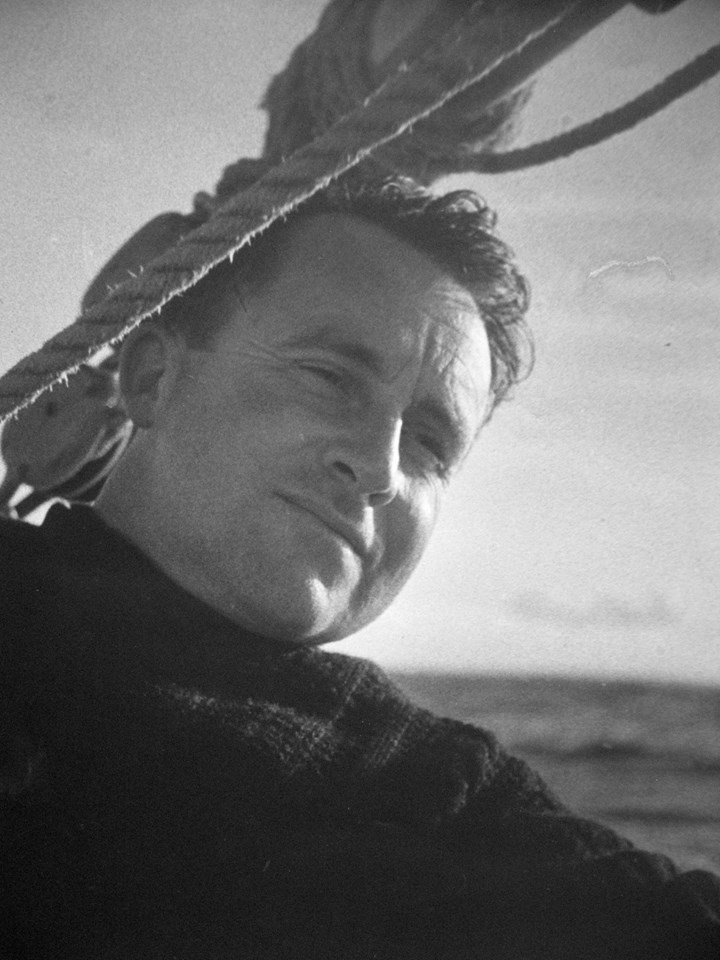
Les Vaughan
Where did you grow up and what did you do for fun?
I’ve spent virtually all my life here in Castlecrag, bar my first year spent in Blakesley street at Chatswood.
Dad was really into boating while mum, Eileen Bessie Hillier, was a renowned horse rider at the Royal Easter Show.
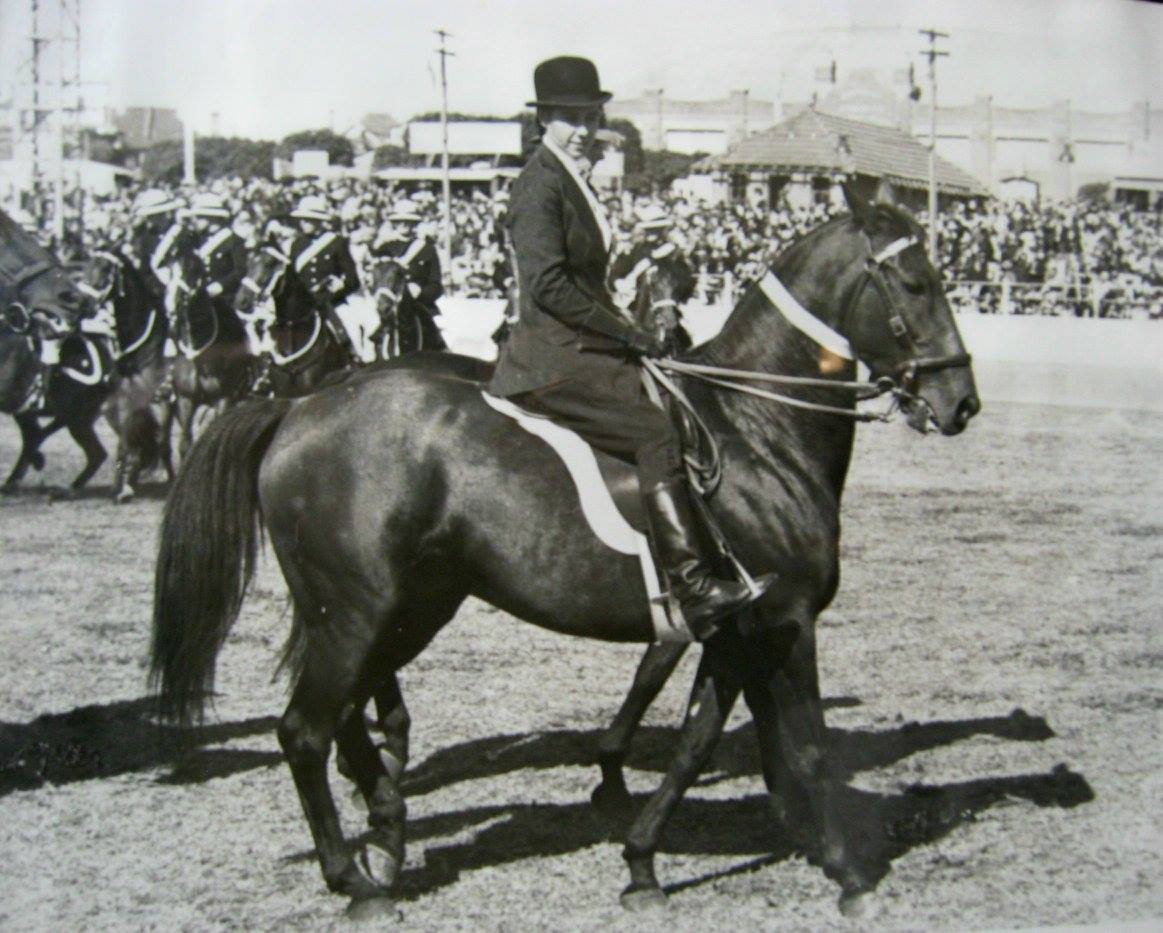
Eileen Bessie Hillier at Royal Easter Show
Mum came from Frenchs Forest. Her parents had migrated from Great Britain to Australia, Grandfather was from Somerset and Grandma from Sheffield. My grandfather, Leonard (Len) Hillier, came to to join the Cootamundra Brass Band – there was a big demand for brass band musicians. His father had been a Drum Major in the British Army and he obviously had a musical bent but he also had another trade, being a qualified Carpenter/builder. As soon as he arrived here there was so much building going on, particularly houses, that he never reached Cootamundra. He stayed in Sydney building homes, including some here in Castlecrag but many around Frenchs Forest and down to Manly. He was living in Brown street at Frenchs Forest, where the extended family had a small farm.
Mum attended Frenchs Forest school and later walked daily to Crows Nest for her secondary school education. She crossed Middle Harbour at Roseville via rowing boat. We still have one of her exercise books from then as one of her claims to fame was her beautiful copperplate writing. Mum used to do these very elaborate masthead images of crossed flags; the Australian flag and the Union Jack.
Dad originally had bought a property at Clareville. He started up a motor engineering works in a rented garage at Archer Street Chatswood in the 1930’s where he would repair cars. He started by himself but eventually employed a few people. He ran that business for over 40 years and eventually bought that garage.
He retired from that work in his mid 70’s and went out selling bricks and was very successful at this. He then, to use the family term, ‘ruralised’ and bought a 327 acre property in Milbrodale, which is just in the Hunter River Valley. He had 30 Hereford cattle there, would grow some crops; watermelon, corn etc. and did this for around 10 years.
He had been, as I was, associated with the Manly, Warringah and Pittwater Historical Society, being Vice President at one point, as was I. we used to work there with a very nice man, Monty Wedd. Monty was a brilliant speaker and had a collection at Narraweena until the home actually became a museum. Eventually he moved everything up to Williamtown where he built a fort-like structure to house his incredible collection of memorabilia as the Monarch Military Museum. This collection had items such as original uniforms from the American revolution – you name it, Monty had it. When he passed away his wife Dorothy was trying to keep the collection intact.
Unfortunately, Monty is no longer with us. One of his claims to fame though was his work as a cartoonist – he did the original dollar bill character when the decimal changeover occurred. He also was into stamps and so did cartoons on those as well as part of a historical series.
I too became deeply involved in all things historical, was a tour officer at one point and ran tours on the Lady Hopetoun.
This all inspired me to look around at Willoughby to see what we had in terms of a historical society, only to find we didn’t have one. I became the convenor of the Willoughby District Historical Society in 1974. (John was the Inaugural President)
That society has grown and grown and now has its own Museum at 58 Johnson street Chatswood in a house that was donated by a young woman, Sonya Kirkham, a WDHS member who was tragically killed in a car accident in 1988. The museum is in the 1913 Federation cottage, Boronia. The museum is open to the public and puts on regular exhibitions as well as housing permanent ones.
This happened after my term as President which was 1975 to 1985. My father was President when the museum was established in 1988. Mum was the very successful, tours officer there from day one and raised over one hundred thousand dollars during her long-term as tours officer. I am proud to be a Life Member of the society.
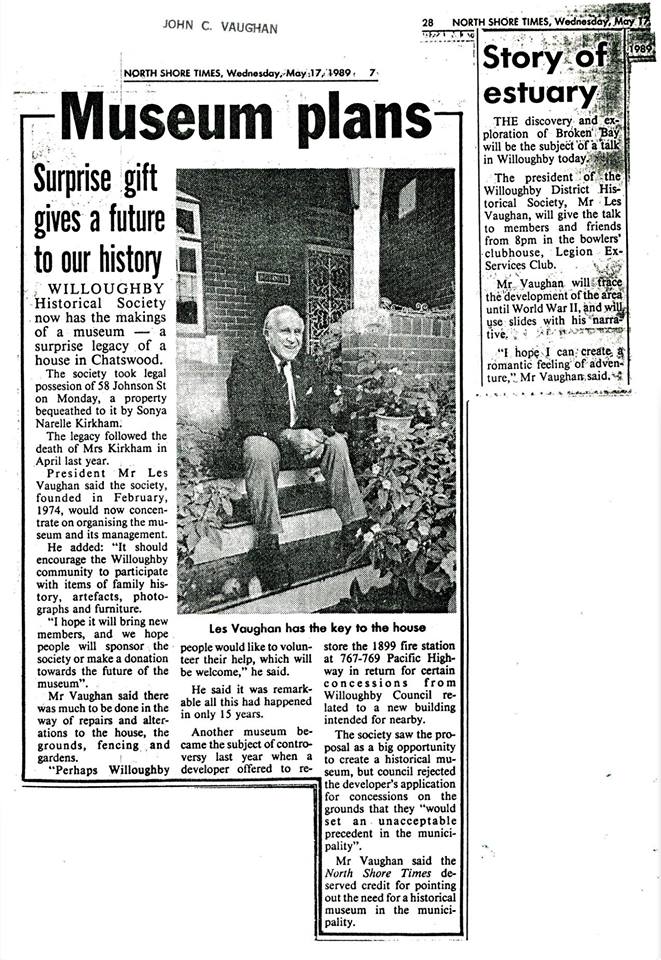
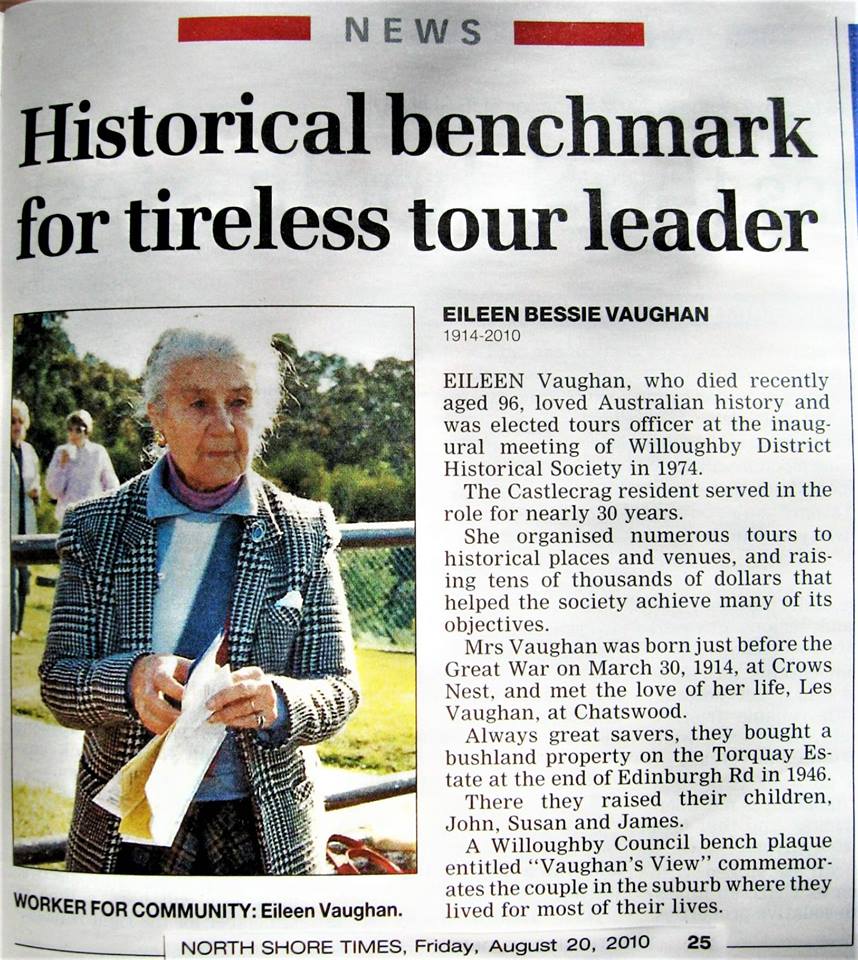
The Vaughan family at Clareville – when was this?
Dad’s cottage was on Hudson Parade and had a view to Lion Island. Dad’s father Jim (and wife Marguerite Innis Vaughan) also had a small property there, the first Vaughan family property, which inspired my father to buy. He bought his place from a schoolteacher who had a little weatherboard cottage. Not much of the built environment remains except for the torpedo wharf and a little boatshed on the beach which looks close to the original.
I took my uncle Ken down to the Avalon Sailing Club 75th Anniversary a few years back and he tried identifying some of the places but it has changed so dramatically – the only intact remnant really is the view from Taylors Point up to Lion Island. I still have a photograph of that same view from then and even pictures of the koalas we used to see everywhere at Clareville.
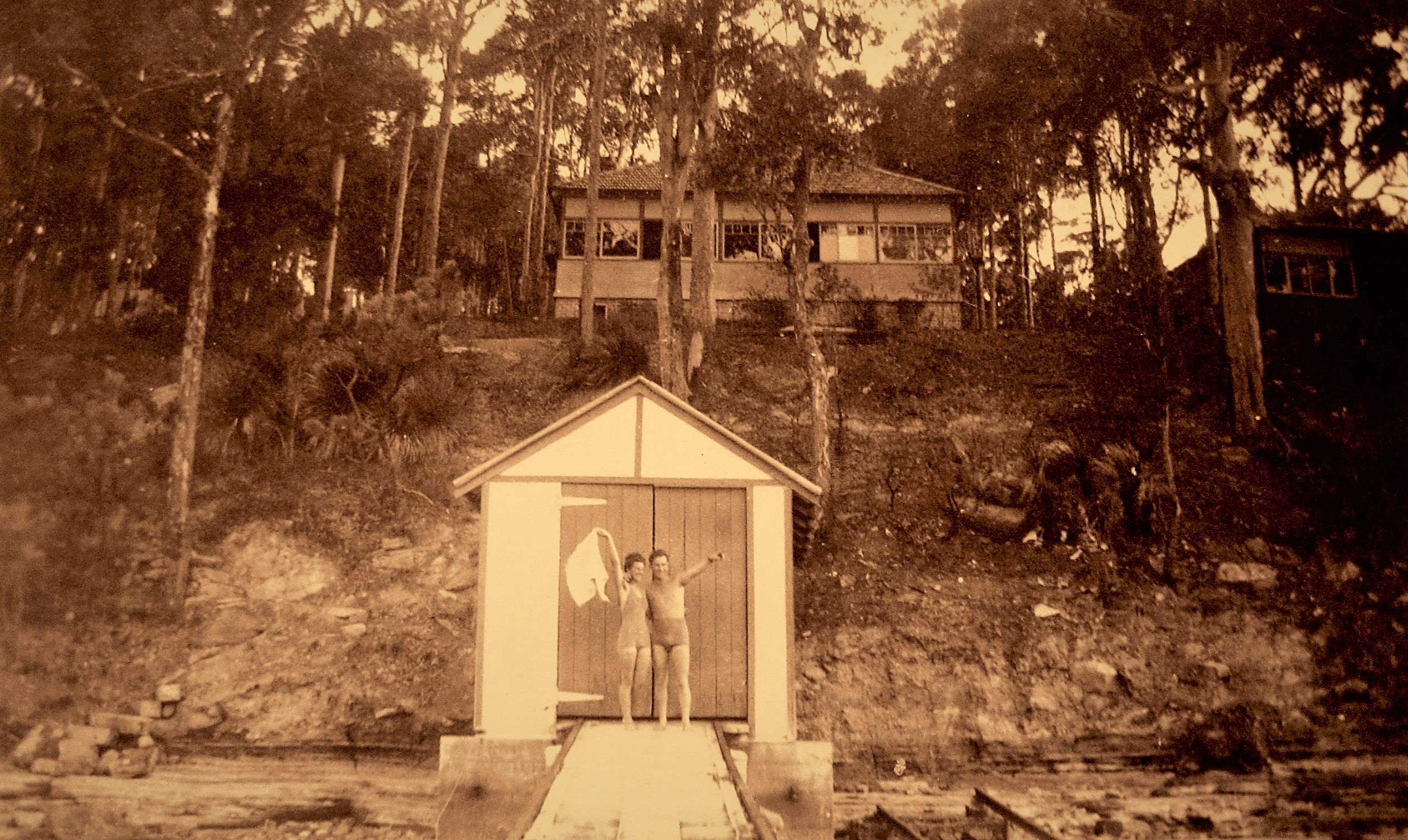
Eileen and Les Vaughan at Clareville, pre WWII
How often did you go to Clareville?
By the time I was born dad realised it was a physical impossibility to work at Chatswood and travel there daily from Clareville; he had a few accidents including one serious one on his motorbike. There was also the fact that most of his travel during wartime was restricted due to fuel rationing. You also had to have brown paper over your headlights during that time, increasing the danger of travelling to and from, and a lot of the road then was just open gravel and dirt.
So he looked around for a place closer to Chatswood that replicated the beauty and the waterways of Pittwater. He saw Castlecrag, which in those days was so far out of the way and had a lot more bushland. There were a couple of fishermen down the end of this dirt track leading to Sugarloaf Point, which was then called ‘Torquay Point’, after the name of the local estate (Torquay was an idealised, popular resort in the UK at that time), which was a collection of barren rocks and bush with tall trees, It had this magnificent view of the deep, clear waters of Middle Harbour.
While dad was looking around he found out that the NSW Government was planning to construct a bridge across Middle Harbour and that there were a couple of people keen to sell as they thought their property would be resumed by the government and they would lose their money – the requisitioning of property not equalling what it was worth then and compensation being next to nothing. So, he found a north-easterly facing bock on Sugarloaf Point, put in an offer and became the owner of a vacant block of waterfront land. Then Len Hillier, who was the Carpenter-Builder, organised the building of the house. They picked something which was contemporary of the period and looked a bit like an ocean liner style – a two-bedroom place, which was ready in 1948. The family took up residence when I was less than a year old.
Where did you go to school?
My first school was Castlecrag Infants School, which is where my twin daughters, Adrienne and Alexandra, ended up attending too. Now it is a private school – but we had a lot of fun there during my time as a student. What I remember of that school is the land had been cleared around Castlecrag and you had this ‘whistling of the wires in the wind’. If a southerly came in this sound would almost lull you to sleep.
At this time I had suspected mastoids and dad was determined that I not be operated on as this was a very dangerous procedure at the time. He went from specialist to specialist in Macquarie street until he found one who said he could cure me with a series of 28 penicillin injections, one a day. Subsequently dad would take me into town very early each morning and I’d be carried out afterwards and go to school.
My own twin daughters, Alex a professional photographer, Alex Vaughan Photography while Adrienne and her husband are bring-up a family on the northern beaches.
What school did you attend after Castlecrag Infants?
A convent school in Archer Street Chatswood which once had been a church. Today it is a large school known as Mercy College.
Later I attended the adjacent Christian Brothers school which became St Pius X College. I got my Leaving Certificate and then went to ‘Tech’ as they called it then and achieved a Business Management certificate.
I wanted to be a Patrol Officer in Papua New Guinea, which required a lot of exams to qualify. The results took the better part of a month to come out and in the meantime the Bank of New South Wales (now Westpac), to which I’d also applied, accepted me stating ‘you don’t have to get anyone to guarantee you anymore’ – there had been a £50 guarantee prior to then which someone had to pay in order to be employed in such a prestigious job. I consequently became a Probationer at the Northbridge branch of the Bank of New South Wales.
I went on relief and worked in some 30 branches of the bank. I had ambitions to get into Advertising and Public Relations and went over to Queenscliff and dropped in, without warning at the home of Brain Chaseling, the Executive Public Relations Manager and boss of the section I wanted to get into. A brilliant man, he could give a speech for any occasion and they were all fantastic, just perfect on every occasion.
He said they might be able to get me into the PR Section on relief to try it out which I did – working in the Advertising and PR Section and associated with the Assistant General Manager there, Russell Prowse. Russell was known as ‘Mr. Bank’ - he campaigned against bank nationalisation back in the late 1940’s – he had a scar on his forehead to prove it; ‘you can’t nationalise all the banks, you already have one in the Commonwealth bank, stick to that’.
We got introduced to people like Sammy Sparrow (Gary O'Callaghan MBE, a brilliant radio personality) on 2UE as part of that work, which was all co-ordinated on the floor of 60 Martin Place, which was then a brand new building and the new Head Office of the bank – it had been down at the bottom of Martin Place on George street – at 341. I loved that period of time and that’s where I met Marlene, my partner.
Marlene was working on the Travel Department. I thought she was (and still is) a most impressive personality, always had everyone laughing, whereas I was quite the opposite. We met in the cafeteria of the bank and married only eight months later in 1975.
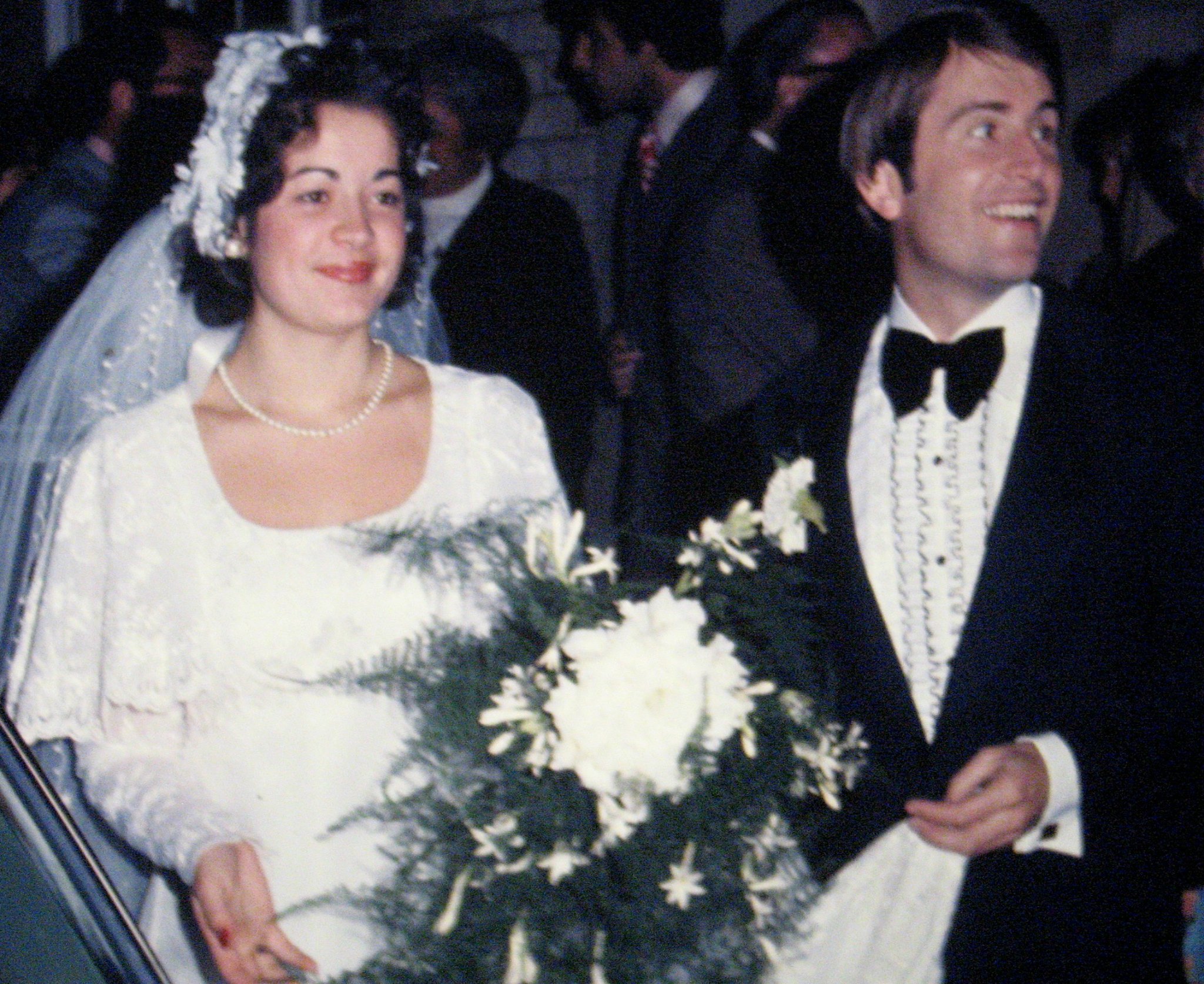
Marlene is of Greek descent, with an original surname of Pantelidis (Greek for sea shell collector) and changed their name to ‘Pendell’ as most people could not easily pronounce Pantelidis. Marlene’s parents lived and worked in Egypt and so enjoyed a cultural sophistication – my late father in law, Tony spoke seven languages fluently, while my mother-in-law, Elsa speaks five languages.
My new family introduced a new, wider world to me.
I was also in the bank at the time Credit Cards were introduced and so had as my job going around to many bank branches and speaking to staff gatherings about the marketing of these cards. I emphasised to bank staff that they are in charge of their own finances and to not let the credit cards take over ensuring that staff remembered that credit card money is not free and that excessive debt can make you dependant.
Flags and being a Vexillographer – how did all that begin?
It was a combination of things; mum had the artistic touch while dad had the historical focus. The combination of those two elements meant I became quite interested in both Ancient and Modern History while still at school. A flag, to me, represented a History Book; it told the story of a country or a place – whether it was a town or village that had a flag or even an individual with their own personal or family flag – everything about this was in that flag and its constituent devices. If you got to know the background of Heraldry and Vexillology you could see all that was the design of a flag. A highlight of my career in flags was recognition by the renowned Macquarie Dictionary that I was recognised as the first person in Australia to be known publicly as a Vexillographer. www.macquariedictionary.com.au/blog/article/70/
I was also intrigued by ability of flags to reflect the natural environment when they move with the wind. Flags have a close association with boats and sailing as they mirror the wind direction and its velocity and dad had a sailing boat.
All of these elements together with the artistry of good design attracted me. Design is so important – the message communicated, a bold and beautiful blend of colours with simplicity, not too many devices on a design – all of these aspects appealed to me.
I used to walk up gangplanks on ships in Sydney harbour and ask to be introduced to the Officer in charge of the flags. I would see if they had any old, used flags that they’d didn’t want any longer and I ended up with quite a collection. I also approached the owners of city buildings that were being demolished and to the Sydney City Council. They told me I should have been there a year earlier as they had taken a great quantity of flags to the tip, some over 100 years old.
By then I had sail bags filled with old flags which we couldn’t take down in the lift and had to throw over the side of the Town Hall building under supervision.
I ended up contacting the Women’s Weekly back in 1969 and they were interested enough to come out and run a full-page story on my flag collection.
KEEPING THE FLAG FLYING (1969, November 5). The Australian Women's Weekly (1933 - 1982), p. 27. Retrieved from http://nla.gov.au/nla.news-article47228290
I still have most of those that are of historic importance. I’m currently looking around for a permanent home for where these historic flags should be housed for posterity.
Around 1973 I started to give a series of Talks on this speciality of Flags, taking along some highlights from the collection to demonstrate points. Requests to give these became more frequent. I’m still giving these Talks on occasion and have given around 5,000 by now – at historical societies, service clubs and radio and television.
Former Prime Minister, Paul Keating wanted to discard the traditional Australian flag of ‘Stars and Crosses’ encouraged by a lobby group Ausflag Limited.
Sir Colin Hines O.B.E., who was then President of the NSW RSL State Branch formed a committee to promote and defend the national flag and I was on the inaugural committee with him and we formed the Australian National Flag Association Inc – ANFA - on October 5th, 1983.
After Sir Hines stepped-down I held the position of President of ANFA some six times over the years. At the height of the battle for our flag ANFA achieved a membership of over 20,000 patriotic supporters. The true and unique story and history of our flag is being told through the publications and professional video has been made available through schools thanks to the work of the wonderful Brendan Nelson when he was Federal Education Minister. He ensured that the video ANFA made was circulated to all schools around Australia. More than 10,000 copies were issued with a flag study kit to our schools.
This achievement of the Australian National Flag Association is one I particularly treasure.
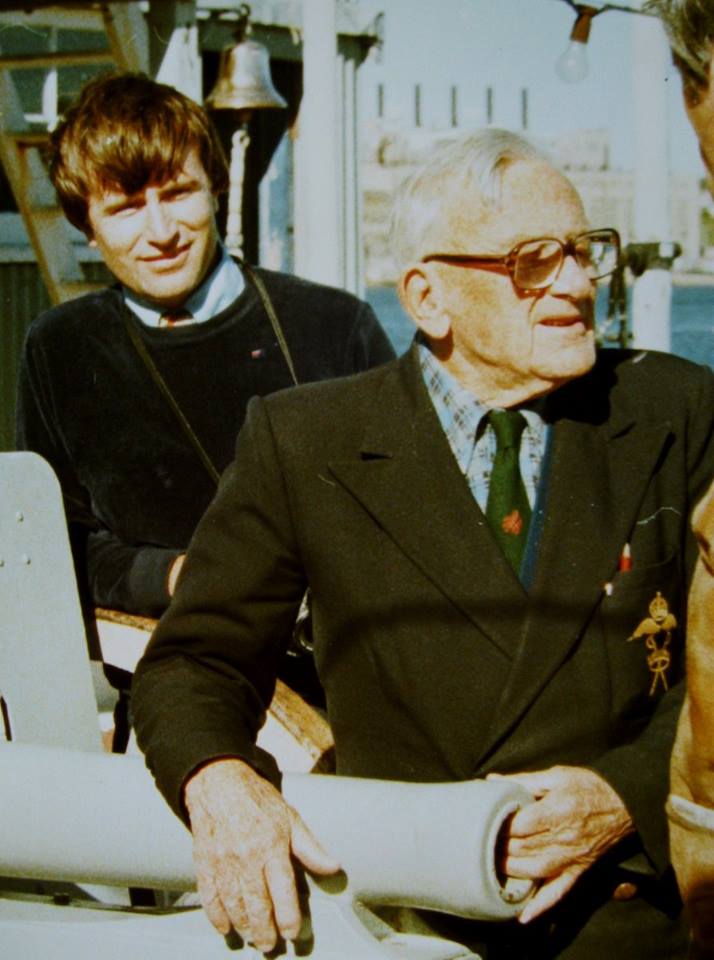
Commander Leonard Edgar Forsythe BEM who was my ‘tutor in flags” and great personal friend.
How did the National Flag Day begin?
When I first joined the ANFA committee with Sir Colin Hines I put forward a motion at the public launch that ANFA lobby the Commonwealth Government to proclaim a National Flag Day, as done in some other countries. The motion was passed enthusiastically and was pursued witch much lobbying involved. In 1996 the Governor-General of Australia, Sir William Deane officially proclaimed Australian National Flag Day to be celebrated annually on 3rd September, commemorating the day in 1901 when our national flag was first flown. The Australian National Flag was chosen from 32,823 entries in a then unique public competition
On 28 August 1996, the Governor-General of Australia, Sir William Deane, issued a proclamation that officially established 3 September as Australian National Flag Day. The idea of an annual day specifically celebrating the Australian National Flag dates from 1984. In that year the New South Wales branch of the Australian National Flag Association (ANFA) arranged for 3 September to be observed as "Australian National Flag Day" at a public ceremony held in Hyde Park, Sydney. The most consistently held and well attended Flag Day ceremonies have also been staged at various locations in Sydney including Tumbalong Park where the Governor of New South Wales, Sir David Martin, delivered a Flag Day address in 1989 which he said: "I come here as someone who is proudly Australian, I come here out of respect for a flag which is proudly Australian". The official centenary of federation flag raising event held at the national maritime museum in 2001 would attract a crowd of several thousand Flag Day spectators.
On Flag Day 1996 an official ceremony took place during the long running event held at Martin Place Amphitheatre in the centre of Sydney. On that occasion David Jull, Minister for Administrative Services, made a commemorative address reading a message from the Prime Minister, John Howard, welcoming the proclamation of 3 September as Australian National Flag Day. He then presented the ANFA with a copy of the proclamation signed by Sir William Deane.
Ceremonies are held annually in schools, other capitals and major provincial centres.
I have a copy of the original Proclamation that went through. Ever since then we have held a National Flag Day Ceremony at Martin Place as well as throughout schools nation-wide. This ceremony is a great reminder that our flag represents everyone who lives in our community and that it’s part of the commonweal, the Commonwealth of Australia through which we share our responsibilities and our friendships; which means we help each other out – that’s what our flag represents; it’s a reminder of our responsibilities to all others here.
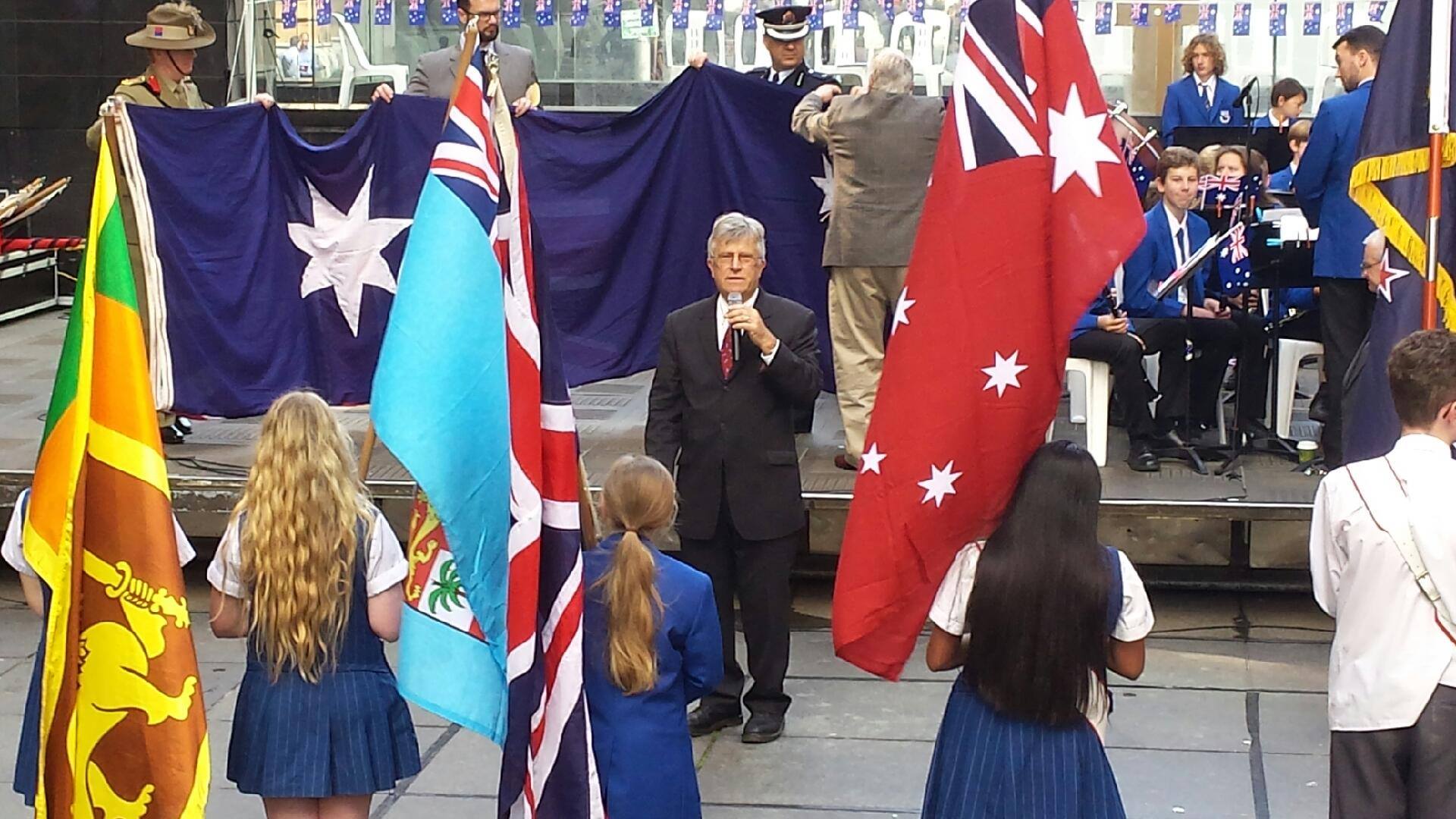
Flag Day in Martin Plaza, 2017
Didn’t this lead to focusing more on flags for you as a business?
Yes. In 1973 I started a part time business which dad helped with as I was still working full time at the bank. Through the talks people were telling me ‘I can’t buy an Australian flag’. The makers here were ‘making to order’ which meant you may wait a month or longer to get a single Australian flag sewn up, and the cost was prohibitive – they were expensive.
Through the talks and collecting I’d come to know one delightful lady at the Canadian Consulate who explained that Canada made lots of flags and printed them on nylon. I consequently got in a small stock of flags and they started to market them. We set up Vaughan Flags and it grew – we even picked up the McDonalds.
It was quite thrilling to do what my grandfather and father had done, in starting a small business.
After 20 years at the bank, and when changes were occurring quite rapidly in 1982, when they changed the name of the bank and the Executive Publicity Manager, Brain Chaseling whom I’d worked with for so long retired the day before the name change came in – because he not only saw the change of name but a whole change of attitude of the banks to become a lot more profit oriented and individual customers became less important than corporate entities. He left, then Russell Prowse was asked to retire, which to me was extremely sad considering he’d devoted his life to the bank, doing media interviews at home as well as at work.
I looked at other work opportunities and was offered a job as that appealed to my love of history as Chief Executive Officer at the Royal Australian Historical Society and did that for the better part of 18 months and enjoyed the role very much except for the personal ambitions of a few the society’s councillors who put personal ambition ahead of the study and appreciation of history.
Meanwhile Vaughan Flags was growing bigger and bigger and so I commenced working in flags fulltime as a vexillographer. I was running this from home initially and people would turn up at any hour of any day, which wasn’t good for family life of course. We found rented premises consisting of two rooms in the back of a 1920’s building at Northbridge which continued for a successful 24 years.
There many perks associated with doing that work of course – you’d get to go to great places like Admiralty House, Kirribilli House and aboard warships all because of flags.
In 2017 I was approached by Warren Cardwell a fellow vexillographer who had indicated over several years that he would like to run a similar flag business. In the end Warren made an offer and acquired the business, ‘Australiana Flags’ I’d just turned 70, was walking to work and finding myself getting stiffer and stiffer and knew sitting in that office and not getting enough exercise, and knew it was time for a change of lifestyle. Warren is still at the same premises and enjoying great success as my successor in Australiana Flags.
You keep returning to Pittwater and Cowan regularly on your yacht Tondelao?
Yes, I find this gives me a complete break in a most beautiful place. The Ku-Ring-Gai Chase National Park and its many waterways is like Australia was 250 years ago – we are blessed that our forebears had the foresight to preserve this area so we can continue to enjoy it. I have a vintage sailing boat, 43 years old this year, and my brother has the sistership a 31 foot cruising yacht, built by Trygve Halvorsen and Trevor Gowland at Wyong. As a consequence, we go up there for a week or two with family and just relax.
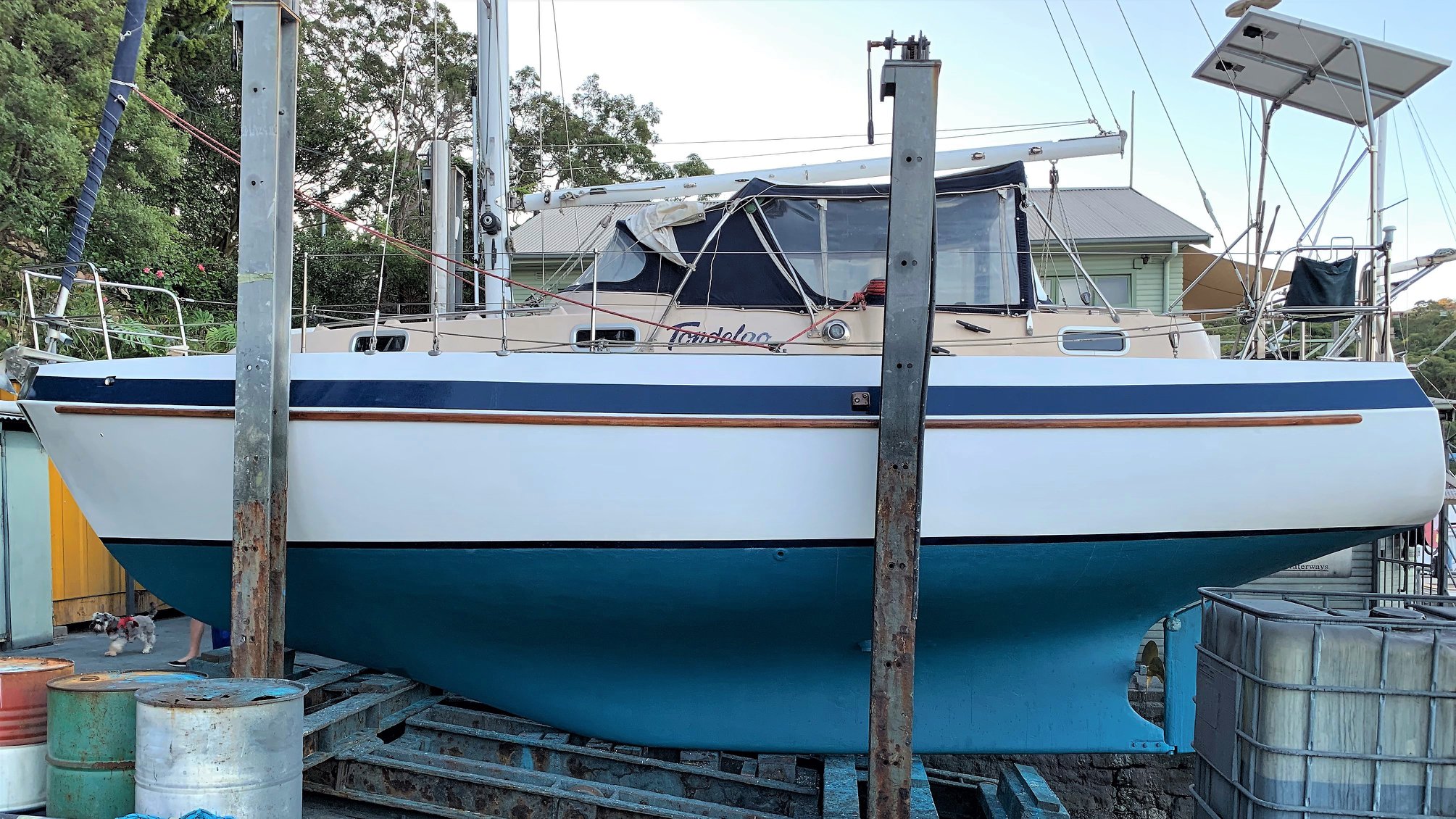
Cruising yacht, Tondelao with John Vaughan - Tondelao on the slipway freshly anti-fouled and topsides waxed and polished. She is now "Ship Shape, Bristol Fashion", ready to enjoy her 44th year afloat in 2020
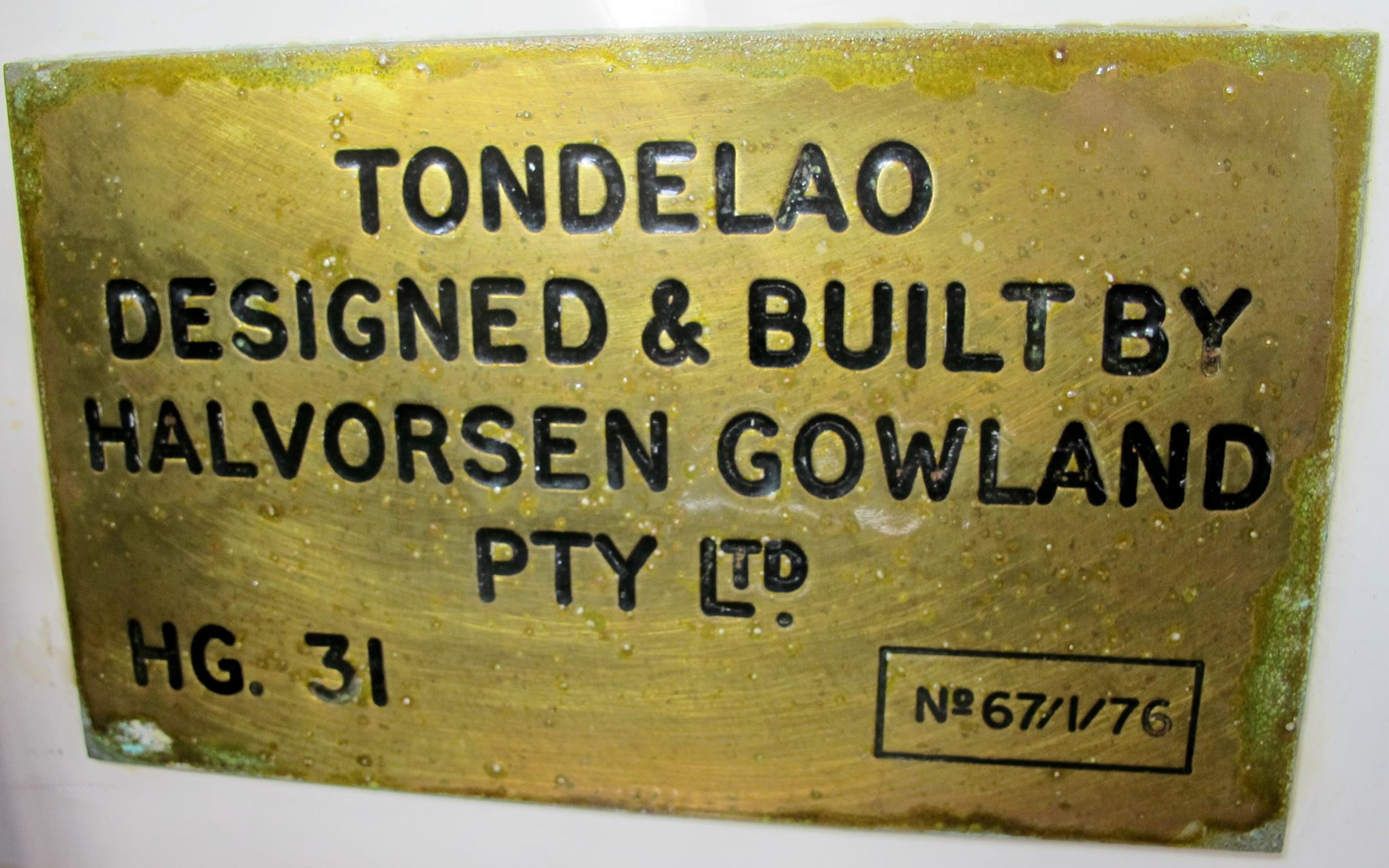
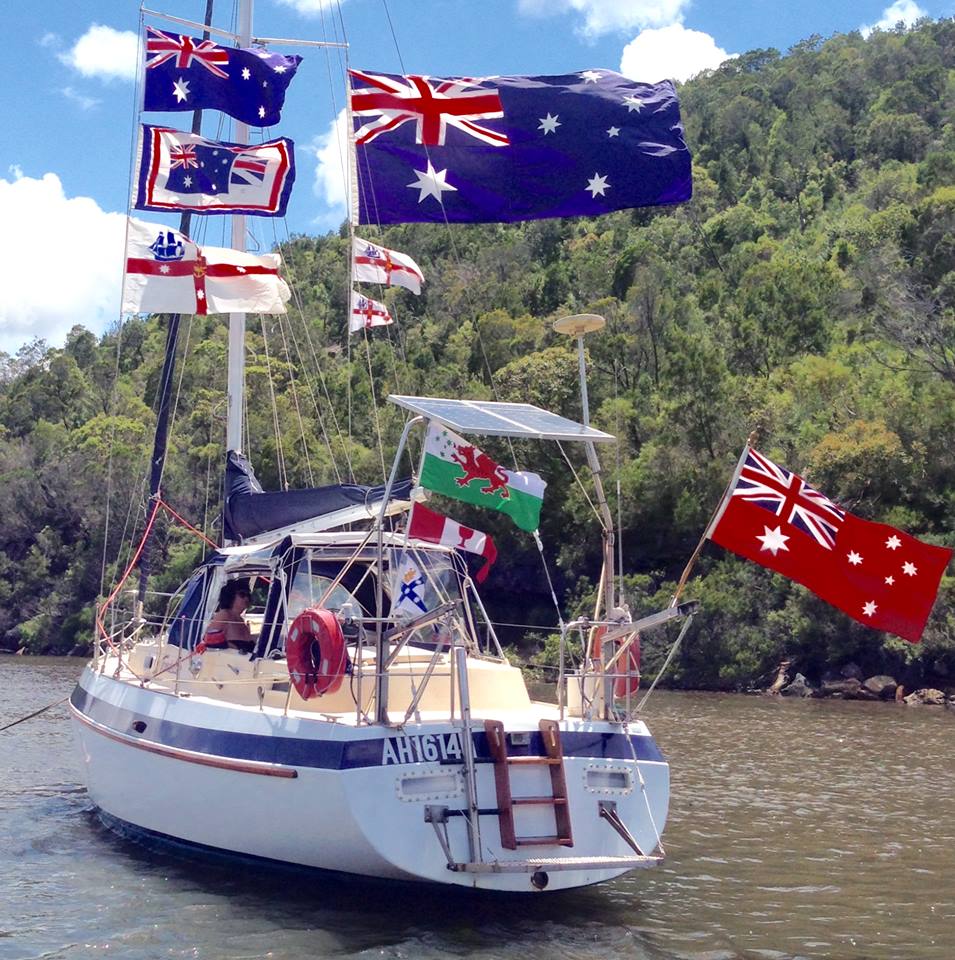
TONDELAO "Dress Ship".
We have taken our first grandchild up there at this stage and soon our latest grandchild is old enough to come too. This is a tradition that goes back to my grandfather, Jim Vaughan who had a launch called the “Raleigh'’ (alluding to seafarer, Sir Walter Raleigh) Jim, ‘Pop’ would go around Pittwater and up the Hawkesbury and into Cowan especially Smith’s Creek to fish – he loved fishing.
My late uncle, Harold Vaughan, who had been the first officer holder entitled as ‘Captain’ of the Royal Prince Alfred Yacht Club, he loved Trafalgar Bay, which is also called Pinta Bay. He had various racing yachts before he went to Halvorsen cruisers. He was a publisher so he always liked a break up there too. His wife June now lives in Brisbane. One of his yachting ‘feats’ was to sail a Diamond Class, Yachting World Keelboat, ‘Saltash’ from Sydney to Melbourne, an lightly built open boat not built to endure the rigours of ocean sailing.
Pittwater, the Hawkesbury and Cowan has been a family gathering place for generations and so is like going home for us. We love the wildlife, the history, beauty and tranquillity of Cowan and surrounding waters. A popular place to visit is Cottage Point with the kiosk where you can get a great feed and have a pleasant, relaxing time. While there you experience the glory of nature first hand. Nature can be fickle, and so you experience not only brilliantly blue-sky days and silvery, full moon nights as much more such as roaring gales and heavy rain with magnificent waterfalls.
The last time I was up there I was in a bay known as Castle Lagoon, which is probably the most protected place you can be, but my dinghy flipped over at night. You have to get a gust of 40 to 50 knots to capsize my heavy dinghy. A friend of mine, Woody, was moored close by and he was knocking on the hull early in the morning to tell me the dinghy was upside-down. The first thing I thought of was the oars in it, which had been my late fathers oars which I’d cleaned up – sanding them back and varnishing them – and they were precious to me. Fortunately, the dinghy had flipped so quickly they were still there trapped in the air-lock under the dingy.
Mum and Dad spent their honeymoon on a small yacht on Pittwater and Cowan. They enjoyed this paradise on countless occasions until Mum passed away at 96 and Dad at 97.
We’ve seen all sorts of creatures there; from Ospreys and Sea Eagles to a death adder mid-stream in Cowan Creek, which I’d never knew could swim, to giant lace monitor lizards – one that was 5 metres long at Hallet’s Beach. We’ve seen rockfalls, huge waterfalls like that one at Refuge Bay, which has featured as the Front Page of boating magazine Afloat as well as in Pittwater Online News.
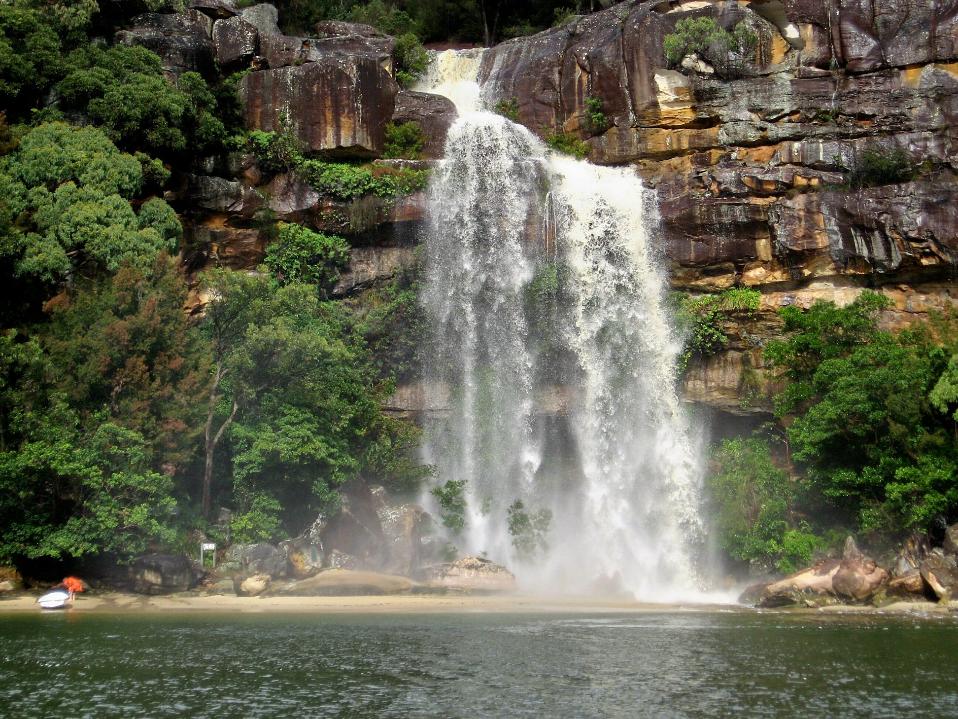
With so much to see there I’ve always carried a camera with me, which is now my iPhone of course and am now upgrading it so it can take better pictures. Anyone can be a photographer nowadays, which is great. On my phone I now have over 10 thousand photographs – many of which are now grandchildren of course.
I now take it with me everywhere and photographed a wallaby here at Castlecrag the other day. Many a time I’ve photographed a wonderful scene here, some wonderful misty mornings which are similar to Cowan Bay when that happens. Such experiences take you back to when Aboriginal people lived and enjoyed being here too, you can appreciate how wild and challenging life once was here.
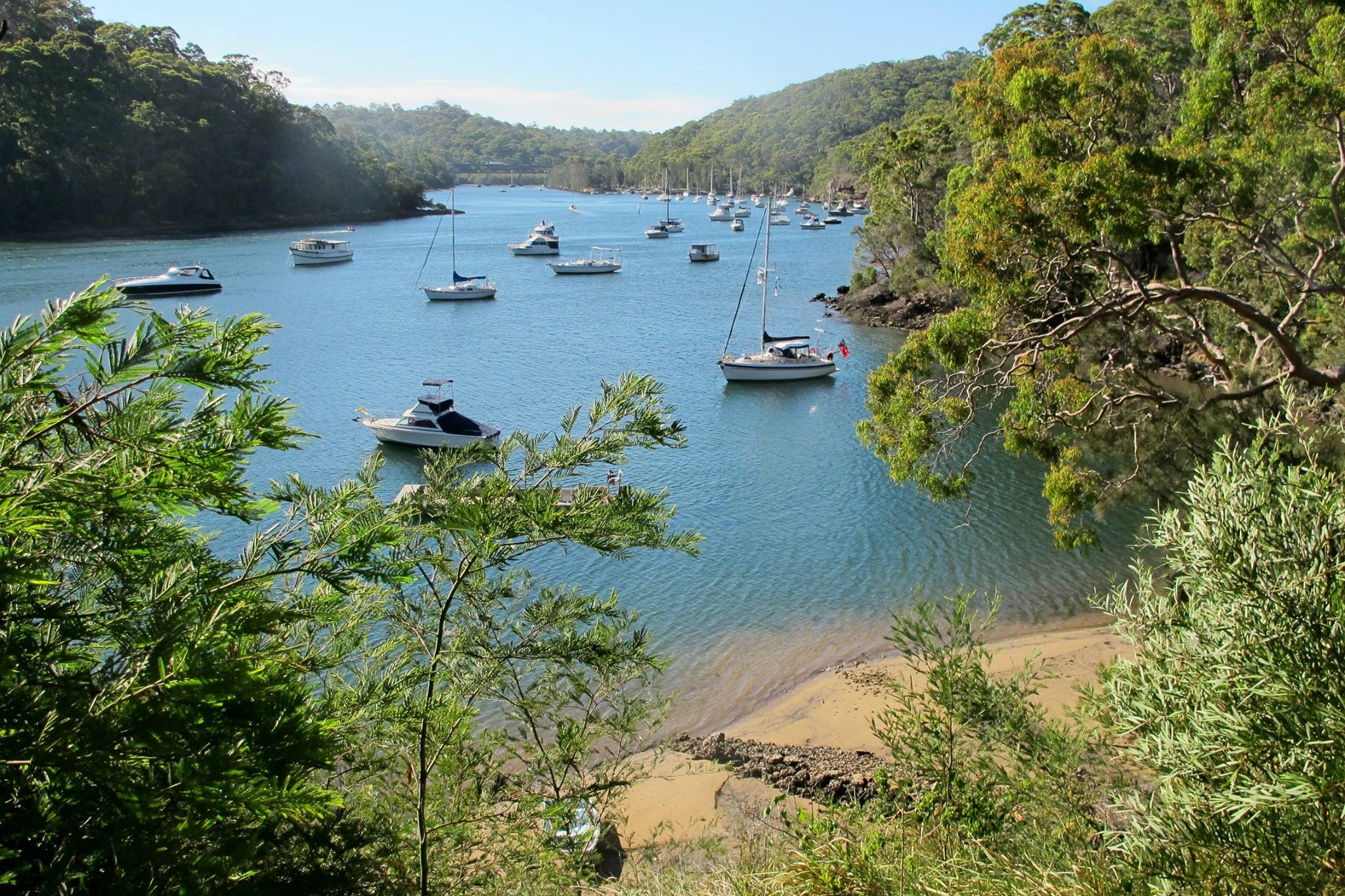
Middle Harbour - photograph by John Vaughan
What is it like to have that many decades in and on and around the water?
A blessing. I have been so fortunate to have been able to live at Middle Harbour here and to have that long family association with Pittwater and Cowan.
Sydney is blessed with the most wonderful waterways – the many harbours, Port Jackson, Broken Bay, Pittwater, the Hawkesbury and Cowan. When I bought my boat I had to bring it up from Victoria and got to see all the great waterways between here and there; the beautiful coastline. On a perfect day with dolphins playing around the boat, you’d be hard pressed to find a better place in the world than here.
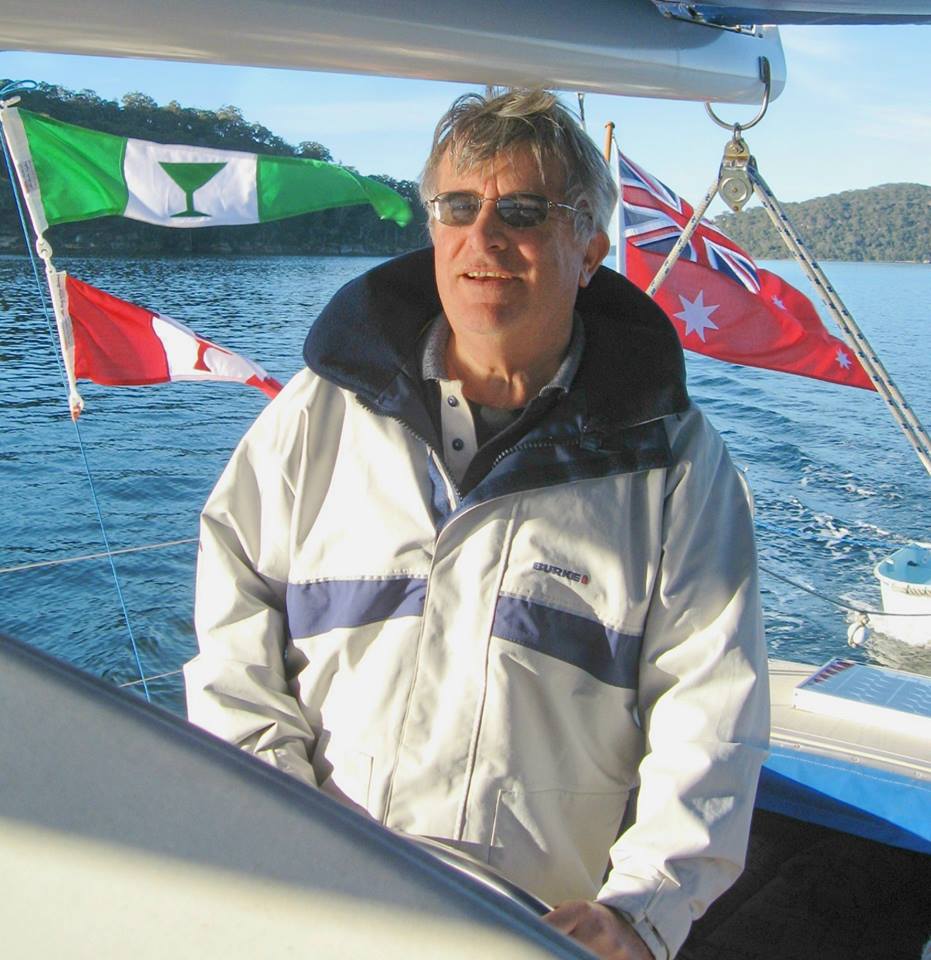
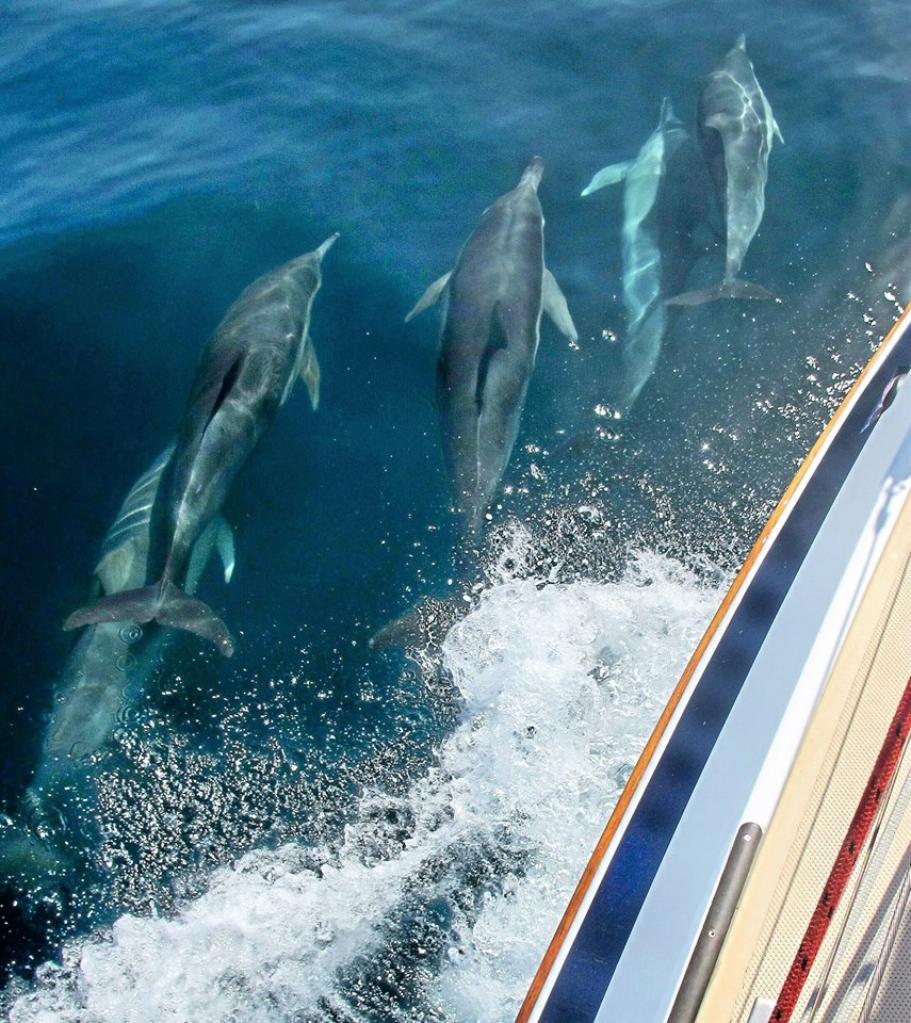
Dolphins accompany TONDELAO along the beautiful coast of New South Wales, a magnificent spectacle, April 28, 2019 - Photo by John Vaughan
On your dad and his boats, it wasn’t just those on the water. Didn’t he donate an exceptional model of the Cutty Sark to the Australian National Maritime Museum?
Yes. Dad’s love of ships and boats and the beauty of the design of ships like the Cutty Sark was such that he looked around to see if he could acquire some models. He ended up finding two, the biggest and the best of which was the Cutty Sark. This was made in Scotland and brought out to Australia by a sea Pilot on the Firth of Forth, Captain Noble. He worked here in the Pilot Service in Sydney. Dad managed to buy his model, which you can see in the background of the 1960’s Women’s Weekly article.
Unfortunately, it wasn’t placed in a protecting case and as a consequence it began to deteriorate. Fortunately, a friend paid for the model to be restored by Naval Historical Society member, Captain David McFall, who once had the Maritime Model Museum at Mona Vale you ran an article on a while back.
I said to dad he really couldn’t look after the model properly in his house close to salt spray. Around that time a member of the Cutty Sark Trust was putting on an exhibition at the Australian National Maritime Museum with the James Caird lifeboat, which had been brought to Australia from the UK for display. While he was here he came and looked at the Cutty Sark model and stated it was a very good example and that the Cutty Sark Trust in London would be pleased to accept it. That would mean it wouldn’t be here any longer so I approached the Australian Maritime Museum who have taken it and you can see it in the museum’s Vaughan Evans Library at Darling Harbour.
We believe Captain Noble personally made this model and it is dated to the First World War or just prior, so even though over a hundred years old now and fully restored it looks as good as new.
This comes back to the essence of what all great historical societies are about too – to inspire people to look deeper and to showcase the great things people can achieve and create for future generations to enjoy the treasures inherited.
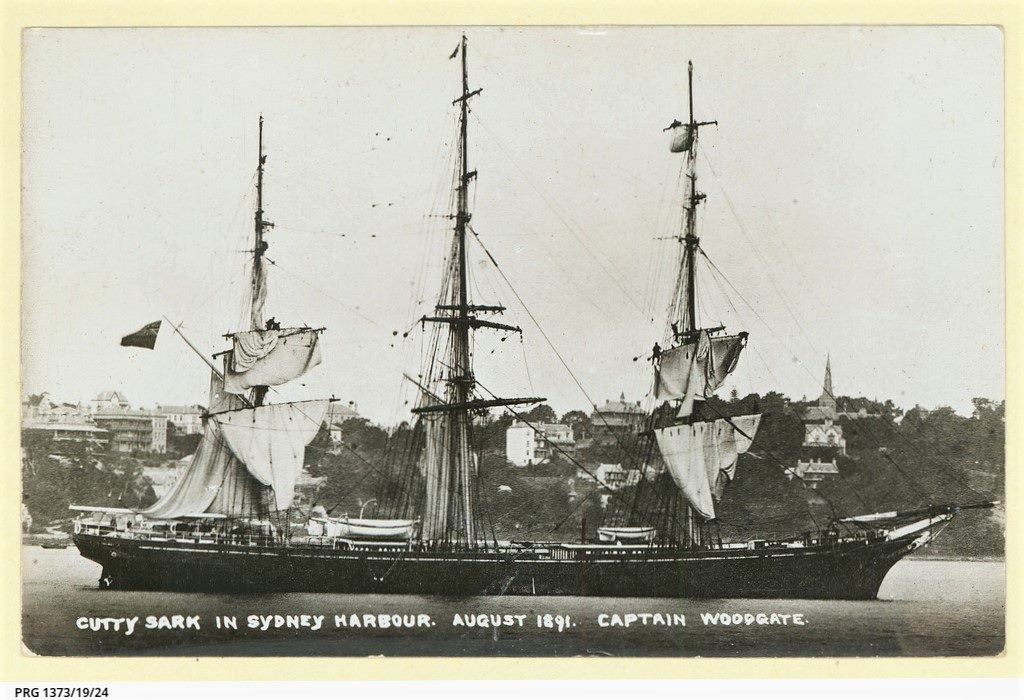
Cutty Sark drying her sails in Sydney, August 1891 - Courtesy of Captain Woodgate
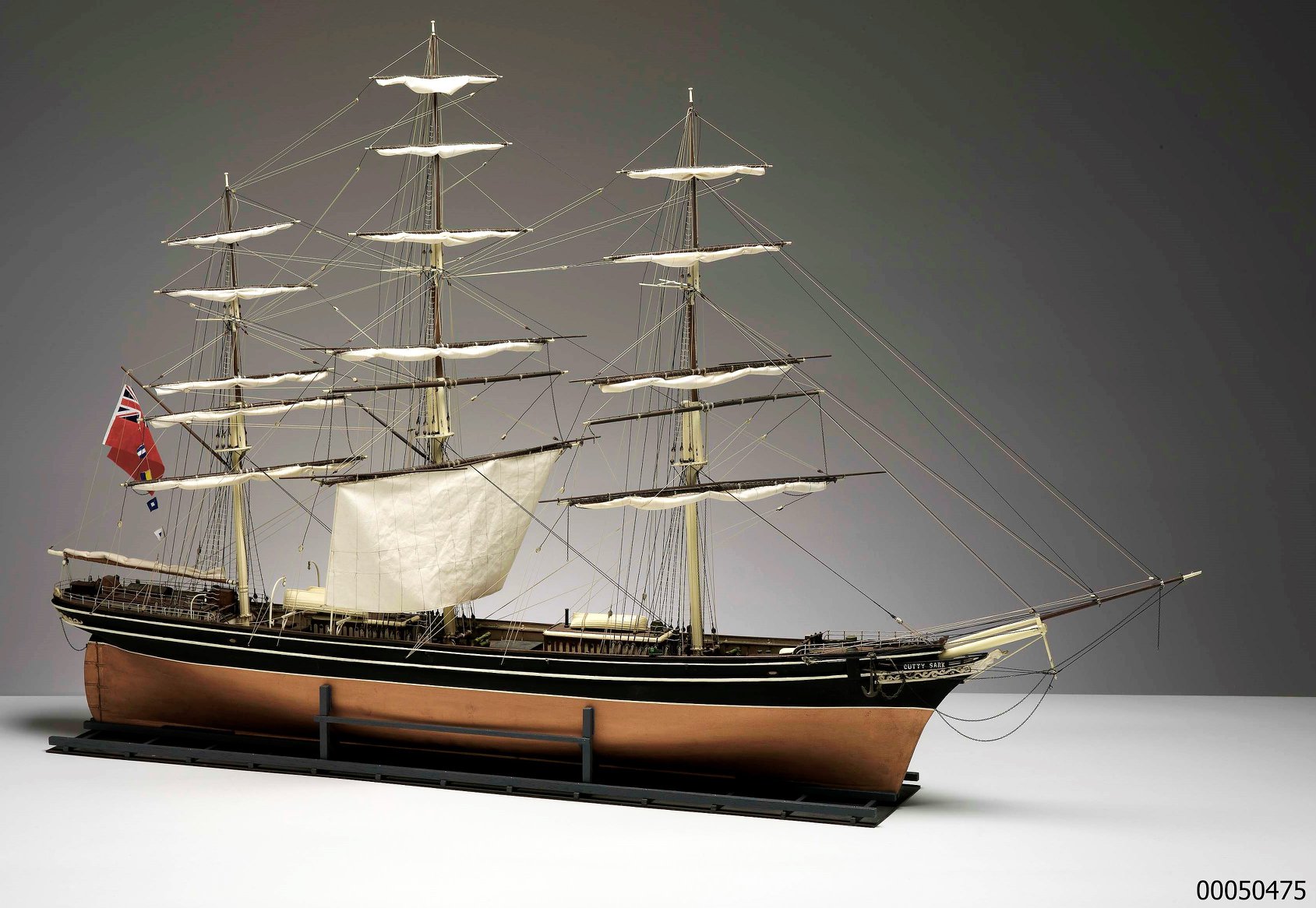
The magnificent Scottish built model of the CUTTY SARK gifted to the Australian National Maritime Museum by the Vaughan Family
Of all the historical items you have found, what is the one item you treasure most?
On our last visit to Cowan Bay I found a cutting flint like stone chip. I was walking on a beach at low tide and saw it, it was subject to tidal flow. It was an implement and was washing down the beach and about to be swept into deeper water, and so would have been lost. I brought it home to Castlecrag, cleaned it up and it has been verified as an Aboriginal implement from a midden originally. It has been offered to a museum. Such items make you wonder about the people who must have held them and where they now are. They bring our history to life. Another was an old-fashioned clay smoking pipe which I found at Bantry Bay, Middle Harbour on a shore that you wouldn’t think anyone would visit.
A highlight of the flag business was the many flag designs I created. Those and the people I met as part of the process – the old, gently spoken Diggers, Sailors and Airmen for instance remains a highlight. When I first started doing in flags there were still Veterans from the Boer War, the First World War and of the Second World War, all of whom have gone now. There were also Veterans from the Korean War and the Malayan Emergency all of whom had fascinating stories to tell.
I also had the privilege to meet a lot of ex-Royal Navy and Royal Australian Navy officers. Many of whom had fabulous sea stories you could listen to for hours. My life was enriched through the opportunity which Vexillology (the study and appreciation of flags and flag-masts) gave me to meet such experienced people.
Another point of great satisfaction was to see a replica of a fully rigged, 32 metres high, Fort Phillip Signal Mast re-instated at Sydney Observatory after 30 years of active lobbying. This was truly a ‘masthead’ project and was made possible by a very generous donation from the Reid family foundation.
A good friend is Richard Morgan. Richard and his father, Rex used to run the Pittwater House schools. I became a member of the Royal Society of St. George and we would have wonderful meetings there in the Great Hall of Pittwater House. Rex is one of the most brilliant speakers that I have heard, enthralling like Brian Chaseling.
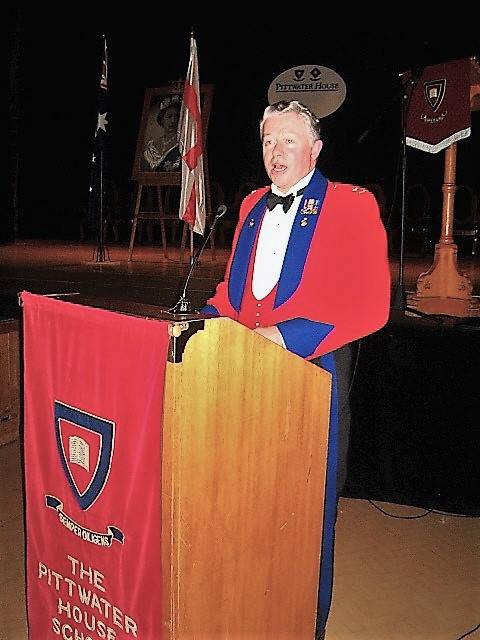
Richard Morgan, Royal Society of St George New South Wales
Rex Morgan as President of the Royal Society of St George was stickler for the upholding the best customs and traditions of the society.
Rex has retired to Bathurst. He bought an old baronial mansion named, Abercrombie House; where sheep were walking through it then. He decided to restore it and we were invited to visit on one St George’s Day celebration. An event was held in what was the vast ballroom of the house which on this occasion was lit by candlepower only. Every family member had to play a musical instrument during the evening. One of them played a French Horn using a hose, beautifully done, another sang in German – all wonderful and just like stepping back into the 1800’s.
One of his sons, Christopher decided to stay and look after the estate and now it is opened up to the public - www.abercrombiehouse.com.au
What are your favourite places in Pittwater and why?
Smith’s Creek and Cottage Rock – because I have a photograph of my mum in her younger days standing there in the same place where we have stood our grandson. The same waterspout is still there where we used to have a shower after fun, the same beach is still there at low tide. It’s a family connected place for me.
Cowan Bay too of course and Cottage Point as a place of many a family gathering.
So many family connections.
I remember one year being asked to ‘Launch the Season’ at the Kuring-gai Motor Yacht Club and so dressed up in a captain’s cap and took the salute for the for all the member’s cruisers in the review – great fun and a special honour.
Innis James George Vaughan Family standing together on beach - Ken, Harold, Les, Gladys and Jim Circa 1930s
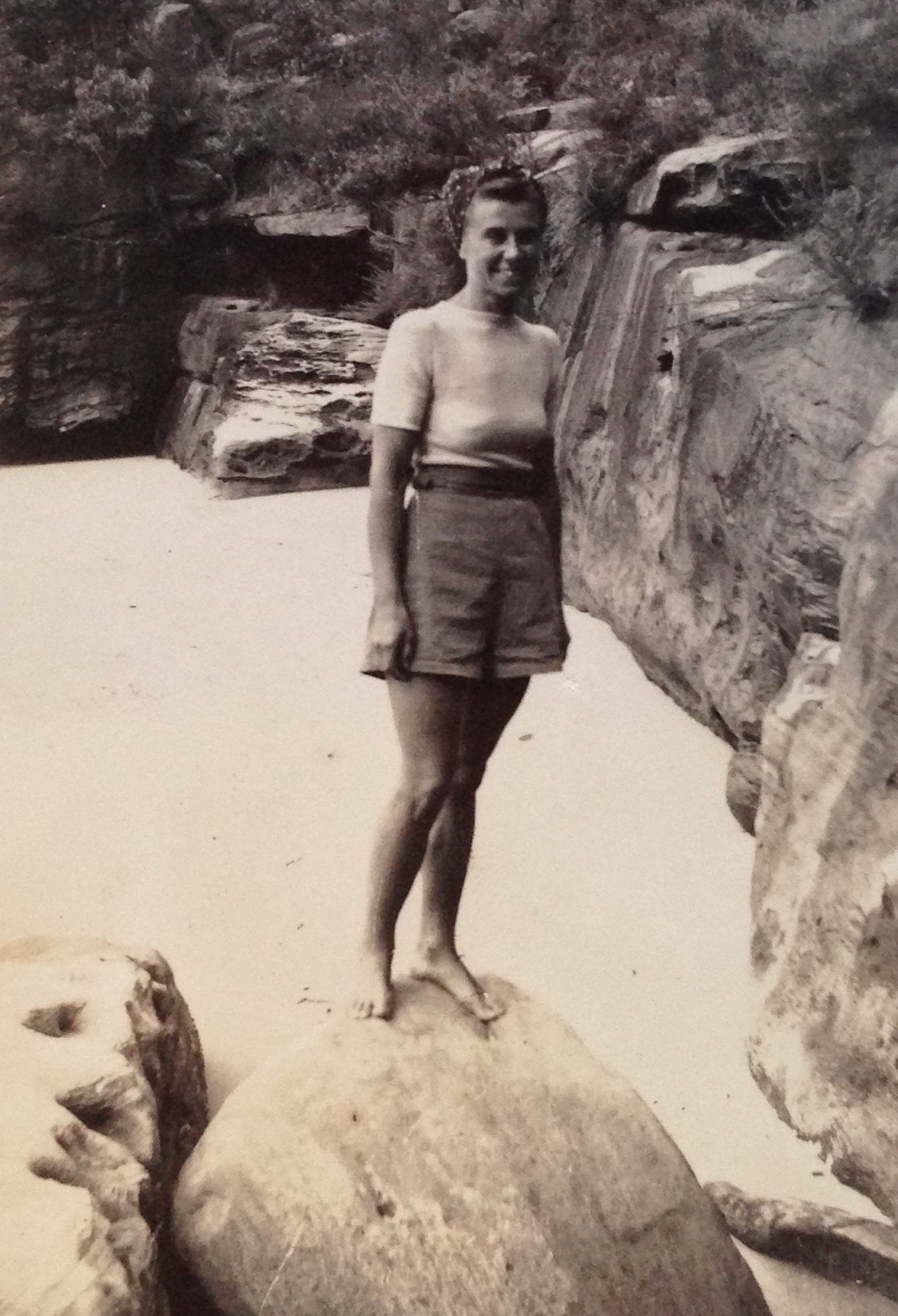
Eileen Bessie Vaughan at Castle Rock, Cowan Water - photo by A L I Vaughan.
What is your ‘motto for life’ or a favourite phrase you try to live by?
Enjoy every moment. Have an inquiring mind and get to know every thing you possibly and treat your fellow human being with respect as if they were part of your own family because they are all the family of Man!
This to me goes back to the Commonwealth of Australia and the common wheel and the sharing of the common wealth. This doesn’t necessarily refer to money – it’s to do with the beauty, the richness of life, the history, the heritage. It’d about looking after what we have, this pristine environment and all that lives there; having respect for and allowing the birds that live by the water to do so now and into the future. It’s about ensuring we fix what’s there that has been damaged – the aquatic environment for example – replacing what has been lost so that continues to thrive – the once abundant oyster beds for example, that actually filter the water, or looking after the seagrass beds, where so many fish live.
All of this is inferred in the original ‘common wealth’ and including all men and women and all beings as part of this.
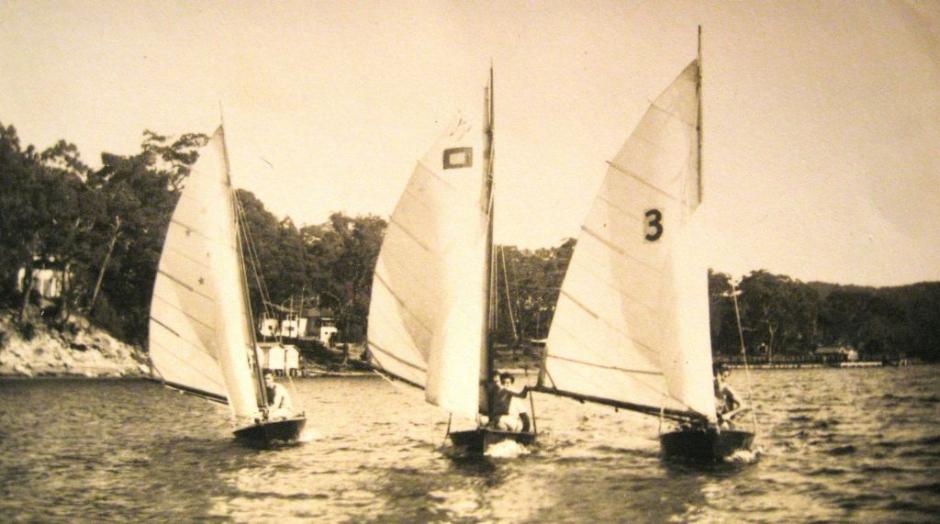
Avalon Sailing Club - VJs Clareville - A Grosvenor SOUTHERN CROSS, Les & Eileen Vaughan FLASH & Harold & June Vaughan DEFIANT pre WWII - Picture courtesy John Vaughan
John Christian Vaughan
Former Chief Executive Officer – ROYAL AUSTRALIAN HISTORICAL SOCIETY
Foundation Member – AUSTRALIAN NATIONAL MARITIME MUSEUM
Convenor & Foundation President – WILLOUGHBY DISTRICT HISTORICAL SOCIETY
Life Member & Honorary Vexillologist – SYDNEY HERITAGE FLEET
Life Member – AUSTRALIA-BRITAIN SOCIETY
Hon. Member – AUSTRALASIAN PIONEERS CLUB & WOOLLAHRA H & H SOCIETY Inc
Life Member – THE FLAG INSTITUTE – PREMIER INTERNATIONAL GROUP OF VEXILLOLOGISTS
Foundation Council Member, Past President & Life Member - AUSTRALIAN NATIONAL FLAG ASSOC (NSW) Inc
Member – FLAG SOCIETY OF AUSTRALIA & THE HERALDY SOCIETY
Member – NAVAL HISTORICAL SOCIETY OF AUSTRALIA Inc.
FLAG DESIGNS CREATED BY JOHN CHRISTIAN VAUGHAN as at June 2017
The following listed flag designs remain the intellectual property of their designer and creator, John Christian Vaughan, in perpetuity.
First Fleet Re-Enactment Suit of Colours
Australian Heritage Flag
First Fleet Formation Flag
Australian National Colonial Flag
Australian Federation Flag
English Australian Flag
Scottish Australian Flag
Irish Australian Flag
Welsh Australian Flag
Cornish Australian Flag
Manx Australian Flag
Greater Sydney Ensign Flag
Greater Sydney Burgee/Pennant Flag
Wollongong City Flag
Port of Sydney Flag
Port of Sydney Burgee/Pennant Flag
Lord Howe Island Flag
Dangar Island Flag
Scotland Island Flag
Willoughby City Flag
Governor-General Flag
Governor of New South Wales Flag
Sydney Ferries House Flag
Marine Rescue House Flag
Anglican Flag of Australia Flag
Anglican Flag of New South Wales
Australian Christmas Flag
Heart Pennant
Red Wine Pennant
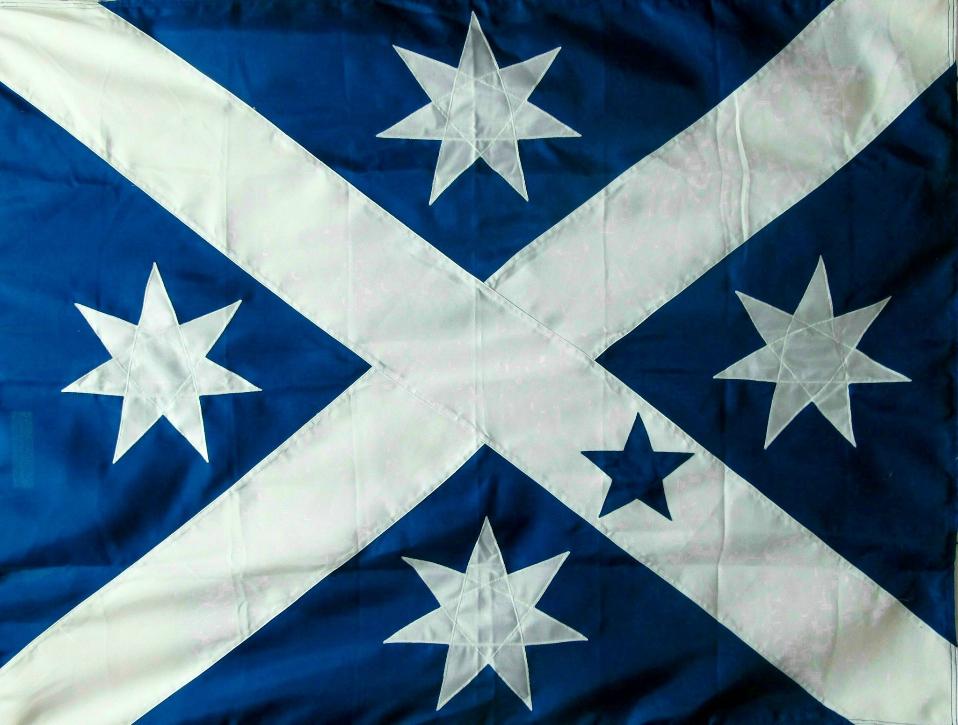
The flag of SCOTLAND ISLAND by John Vaughan, Vexillographer.
Previously - By John Vaughan In Pittwater Online News:
Concerns Over On Water Speed Regulations At Middle Harbour, March 2015, Issue 204
The Currawong: Classic Yacht, August 2015, Issue 225
Cowan Bay In Autumn - May 2018, Issue 361
Front Page Issue 402; 'Dolphins accompany TONDELAO along the beautiful coast of New South Wales'
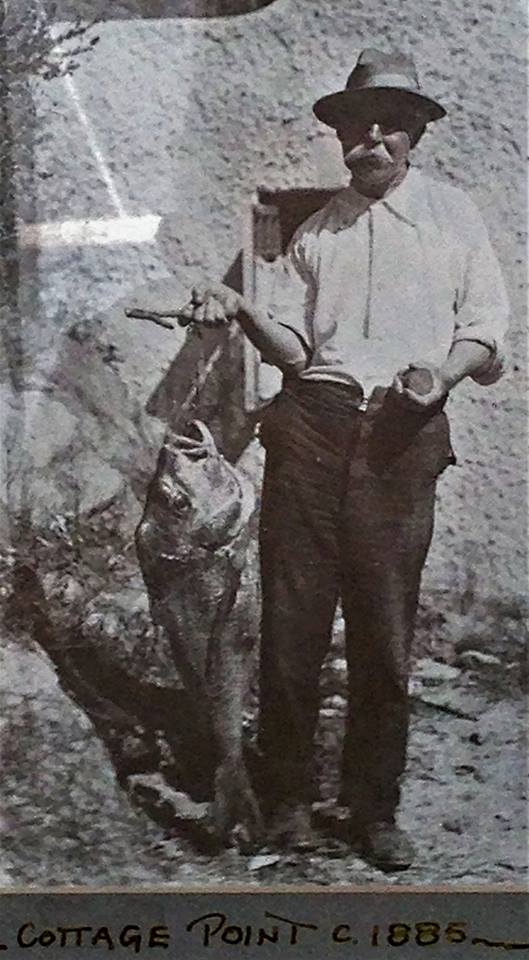
Cottage Point fisherman circa 1885
Brian Erskine Chaseling MBE
Passed away July 22nd, 2012, aged 91 years.
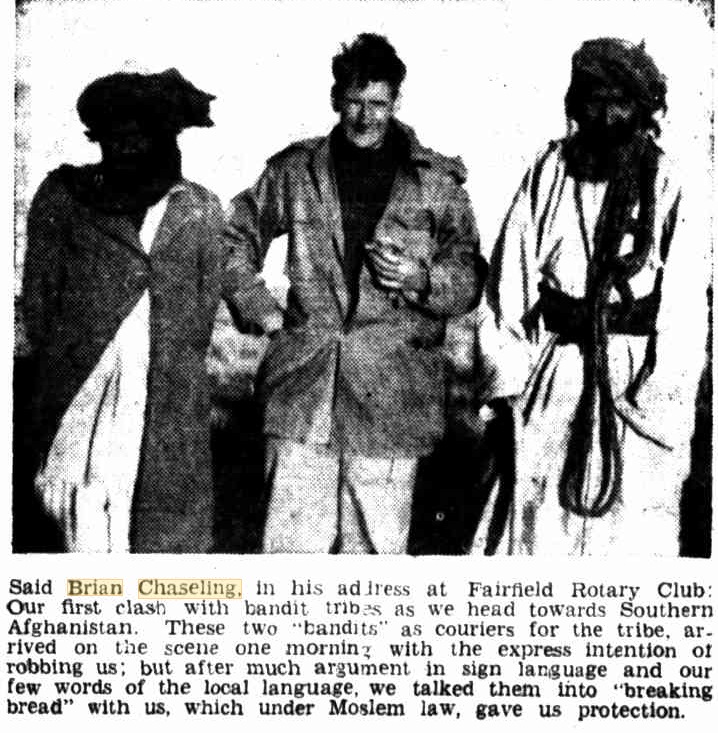
No title (1956, July 11). The Biz (Fairfield, NSW : 1928 - 1972), p. 9. Retrieved from http://nla.gov.au/nla.news-article189251514
KEEPING THE FLAG FLYING
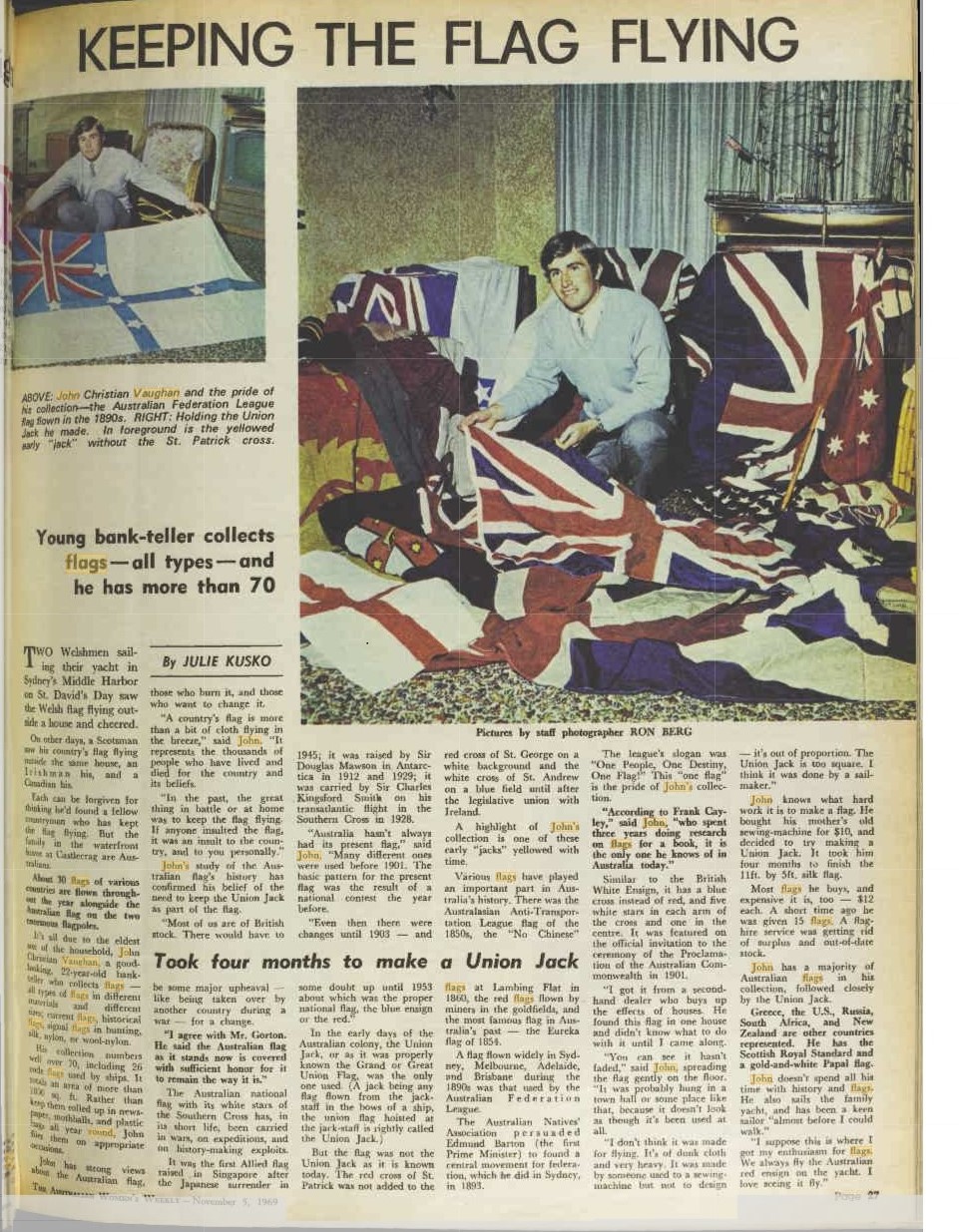
ABOVE: John Christian Vaughan and the pride of his collection — the Australian Federation League flag flown in the 1890s. RIGHT: Holding the Union Jack he made. In foreground is the yellowed early "jack" without the St. Patrick cross.
Young bank-teller collects flags — all types — and he has more than 70
By JULIE KUSKO
Pictures by staff photographer RON BERG
TWO Welshmen sailing their yacht in Sydney's Middle Harbor on St. David's Day saw the Welsh flag flying out-side a house and cheered.
On other days, a Scotsman saw his country's flag flying outside the same house, an Irishman his, and a Canadian his.
Each can be forgiven for thinking he'd found a fellow countryman who has kept the flag flying. But the family in the waterfront home at Castlecrag are Australians.
About 30 flags of various countries are flown through-out the year alongside the Australian flag on the two enormous flagpoles.
It's all due to the eldest son of the household, John Christian Vaughan, a good-looking, 22-year-old bank-teller who collects flags — all types of flags in different materials and different sizes; current flags, historical flags, signal flags in bunting, silk, nylon, or wool-nylon.
His collection numbers well over 70, including code flags used by ships. It totals an area of more 1000 sq. ft. Rather than keep them rolled up in news-paper, mothballs, and plastic bags all year round, John flies them on appropriate occasions.
John has strong views about the Australian flag, those who burn it, and those who want to change it.
"A country's flag is more than a bit of cloth flying in the breeze," said John. "It represents the thousands of people who have lived and died for the country and its beliefs.
Took four months to make a Union Jack
"In the past, the great thing in battle or at home was to keep the flag flying. If anyone insulted the flag, it was an insult to the country, and to you personally."
John's study of the Australian flag's history has confirmed his belief of theneed to keep the Union Jack as part of the flag.
"Most of us are of British stock. There would have to be some major upheaval — like being taken over by another country during a war — for a change, some major upheaval — like being taken over by another country during a war — for a change.
"I agree with Mr. Gorton. He said the Australian flag as it stands now is covered with sufficient honour for it to remain the way it is."
The Australian national flag with its white stars of the Southern Cross has, in its short life, been carried in wars, on expeditions, and on history-making exploits.
It was the first Allied flag raised in Singapore after the Japanese surrender in 1945; it was raised by Sir Douglas Mawson in Antarctica in 1912 and 1929; it was carried by Sir Charles Kingsford Smith on his transatlantic flight in the Southern Cross in 1928.
"Australia hasn't always had its present flag," said John. "Many different ones were used before 1901. The basic pattern for the present flag was the result of a national contest the year before.
"Even then there were slight changes until 1903 — and some doubt up until 1953 about which was the proper national flag, the blue ensign or the red."
In the early days of the Australian colony, the Union Jack, or as it was properly known the Grand or Great Union Flag, was the only one used. (A jack being any flag flown from the jack-staff in the bows of a ship, the union flag hoisted at the jack-staff is rightly called the Union Jack.)
But the flag was not the Union Jack as it is known today. The red cross of St. Patrick was not added to the red cross of St. George on a white background and the white cross of St. Andrew on a blue field until after the legislative union with Ireland.
A highlight of John's collection is one of these early "jacks" yellowed with time.
Various flags have played an important part in Australia's history. There was the Australasian Anti-Transportation League flag of the 1850s, the "No Chinese"
flags at Lambing Flat in 1860, the red flags flown by miners in the goldfields, and the most famous flag in Australia's past — the Eureka flag of 1854.
A flag flown widely in Sydney, Melbourne, Adelaide, and Brisbane during the 1890s was that used by the Australian Federation League.
The Australian Natives' Association persuaded Edmund Barton (the first Prime Minister) to found a central movement for federation, which he did in Sydney, in 1893.
The league's slogan was "One People, One Destiny, One Flag!" This "one flag" is the pride of John's collection.
"According to Frank Cayley," said John, "who spent three years doing research on flags for a book, it is the only one he knows of in Australia today."
Similar to the British White Ensign, it has a blue cross instead of red, and five white stars in each arm of the cross and one in the centre. It was featured on the official invitation to the ceremony of the Proclamation of the Australian Commonwealth in 1901.
"I got it from a second-hand dealer who buys up the effects of houses. He found this flag in one house and didn't know what to do with it until I came along.
"You can see it hasn't faded," said John, spreading the flag gently on the floor. "It was probably hung in a town hall or someplace like that, because it doesn't look as though it's been used at all.
"I don't think it was made for flying. It's of dunk cloth and very heavy. It was made by someone used to a sewing machine but not to design — it's out of proportion. The Union Jack is too square. I think it was done by a sail-maker."
John knows what hard work it is to make a flag. He bought his mother's old sewing-machine for $10, and decided to try making a Union Jack. It took him four months to finish the 11ft. by 5ft. silk flag.
Most flags he buys, and expensive it is, too — $12 each. A short time ago he was given 15 flags. A flag-hire service was getting rid of surplus and out-of-date stock.
John has a majority of Australian flags in his collection, followed closely by the Union Jack.
Greece, the U.S., Russia, South Africa, and New Zealand are other countries represented. He has the Scottish Royal Standard and a gold-and-white Papal flag.
John doesn't spend all his time with history and flags. He also sails the family yacht, and has been a keen sailor "almost before I could walk."
"I suppose this is where I got my enthusiasm for flags. We always fly the Australian red ensign on the yacht. I love seeing it fly."
KEEPING THE FLAG FLYING (1969, November 5). The Australian Women's Weekly (1933 - 1982), p. 27. Retrieved from http://nla.gov.au/nla.news-article47228290
Mr Vaughan has been a flag collector for 18 years, reports Sandra Moore.
John Vaughan is a vexillologist. But it has nothing to do with the state of his temper. Derived from the Latin word for a military banner, it means he is a student of flags. In Craig Lamotte's picture, he and his wife, Marlene, are seen with some of his collection of more than 500 flags at their home in the Sydney suburb of Castlecrag.
They fly Australia's national flag there every day. "Both my grandfather and father always flew the national flag." said Mr Vaughan.
"We also fly the flag of any other country holding a celebration.
"Generally, Australians don't appreciate the value of old flags. To me, they are much more important than coins or stamps. They reflect the history, customs and traditions of the country they represent."
Australia's Southern Cross design was chosen from 32,823 contest entries in 1901, five people sharing the $400 prize. But it was not given status as the national flag until 1953.
Mr Vaughan said he hoped Australians would start to take more pride in their flag. "It is a great national symbol, non-political and non-sectarian, belonging equally to everyone." Compact (1980, September 10). The Australian Women's Weekly (1933 - 1982), p. 36. Retrieved from http://nla.gov.au/nla.news-article51772629
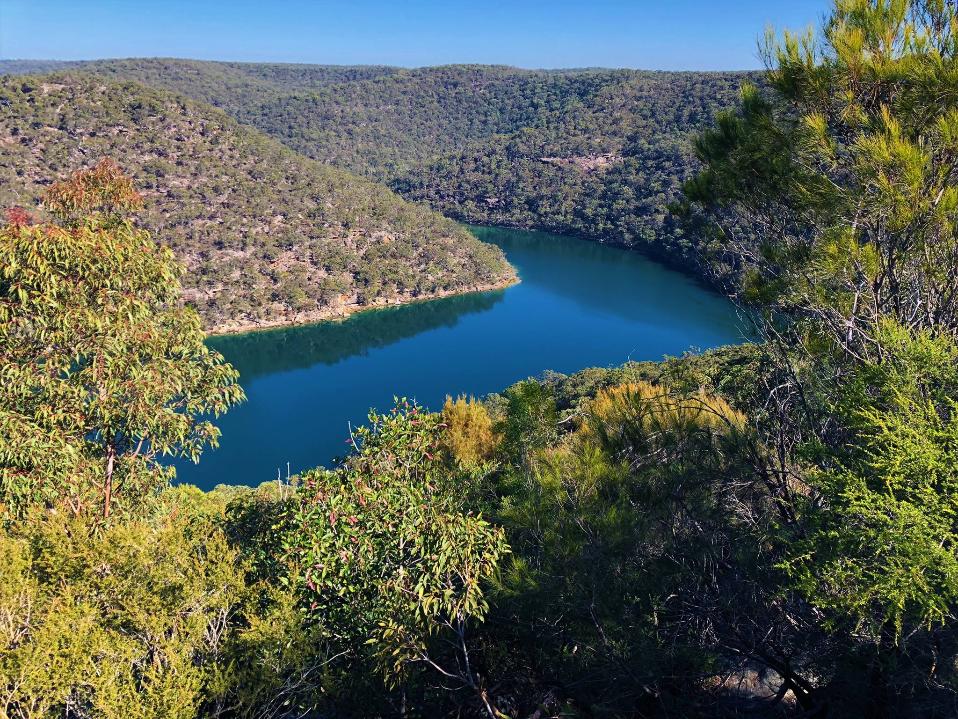
Glorious Cowan Water - Smiths Creek - Stingray Bay - 14 August 2018 - Photo by John Vaughan — in Ku-Ring-Gai Chase.